As climate change intensifies and urbanisation accelerates, cities around the world are increasingly defined by water. In some cases they have too little, sometimes too much, or sometimes water that’s too dirty.
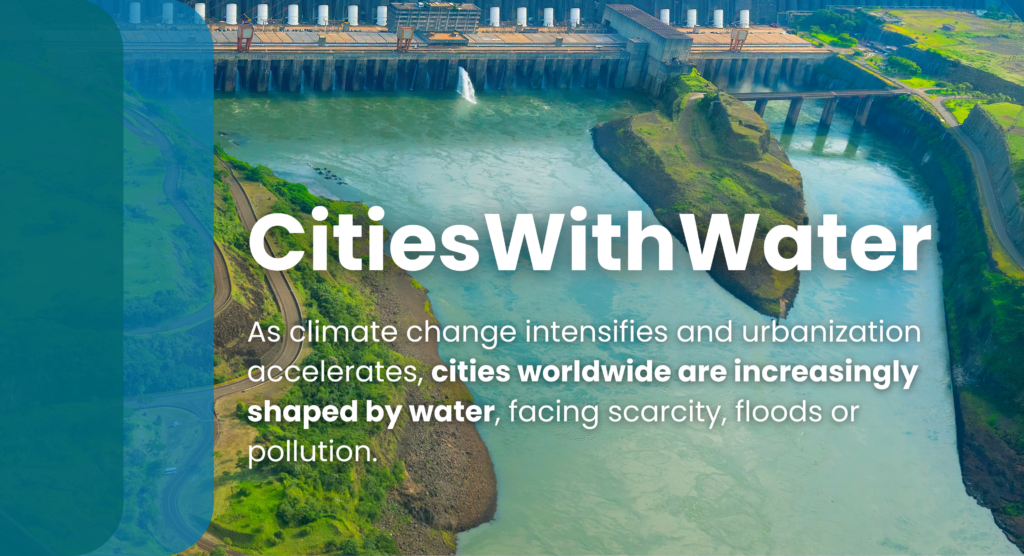
The CitiesWithWater initiative has placed water firmly on the urban sustainability agenda. Through a webinar series and an international photography competition, CitiesWithWater is raising the voice of cities and learning how they can and should act now to safeguard water systems, human well-being and ecosystems.

In the recent webinar titled “Too Much“, hosted in collaboration with the World Water Council, city leaders and technical experts explored how urban areas are preparing for or recovering from floods, storms, sea-level rise and the cascading impacts of climate change. This second installment in the CitiesWithWater series followed the success of the first (“Too Little”) and sets the stage for the upcoming webinar, “Too Dirty”, which will delve into water pollution and the urgent need to protect downstream ecosystems and coastal waters.
The “Too Much” webinar (18 June 2025) highlighted that flood-related disasters have increased by 134% since 2000 (WMO, 2021), a statistic that no city can afford to ignore. Panellists from cities including Kumamoto (Japan), Lusaka (Zambia), Ningbo (China), and Larissa (Greece) shared powerful case studies on how their municipalities are adapting to flood risks.
What happens upstream doesn’t stay upstream. With the UN Ocean Conference (UNOC) recently reaffirming the vital links between terrestrial and marine systems, CitiesWithWater is also working to bridge the gap between urban water governance and coastal health. Dirty or excessive water from cities — be it stormwater, untreated sewage, or plastic waste — flows downstream, posing major threats to fragile estuaries, coral reefs and fisheries.
In the upcoming “Too Dirty” webinar, these linkages will be explored more deeply. How can cities protect downstream ecosystems from pollution while safeguarding human health and livelihoods? What does it take to reduce nutrient runoff, manage industrial discharge and treat wastewater effectively in dense urban settings?
With the Convention on Wetlands COP15 fast approaching in July 2025 in Victoria Falls, Zimbabwe, CitiesWithWater is also drawing attention to the vital role of urban wetlands. These ecosystems, often overlooked in city planning, act as natural sponges that absorb floodwaters, filter pollutants and recharge aquifers.
Wetlands also serve as critical habitat for biodiversity, cooling spaces for urban residents and buffers against sea-level rise and coastal storms. Yet urban expansion continues to degrade or destroy them. Between 1970 and 2015, 35% of the world’s wetlands were lost (Ramsar Global Wetland Outlook, 2018), and many that remain are under pressure from pollution, encroachment and climate change.
Cities that invest in wetland protection and restoration — like Cape Town’s rehabilitation of the Zandvlei Estuary or Kolkata’s use of its East Kolkata Wetlands for natural sewage treatment — are leading the way in reintegrating nature into urban water systems.
Urban water systems are not just pipes and pumps. They are the veins and arteries of a living city to sustain health, enable growth and connect communities. Yet they are under serious threat:

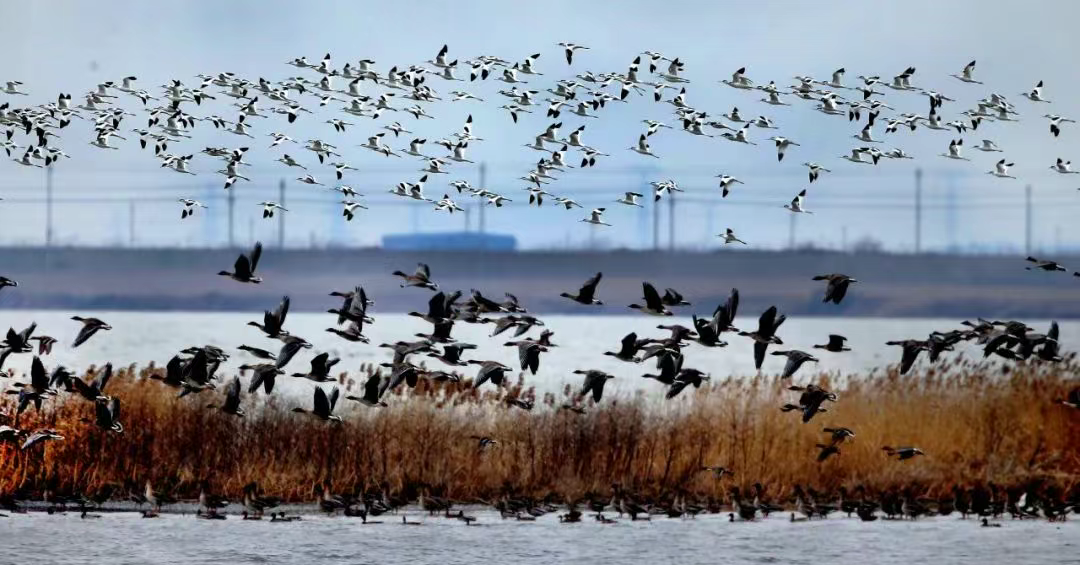
Shaoxing City in Zhejiang Province is embracing a model where biodiversity conservation powers sustainable development. The Shangyu Coastal Wetlands, a critical stopover on the East Asia–Australasia Flyway, welcome over 100 species of rare migratory birds each year, including spoonbills and bean geese. Recognized by BirdLife International, this “Millennium Bird Path” reflects Shaoxing’s commitment to ecological stewardship.
In recent years, Shaoxing has integrated biodiversity considerations into urban and spatial planning, establishing 23 consolidated protected areas and delineating ecological redlines. The city has also launched widespread public awareness campaigns and built digital tools to promote citizen engagement. In 2024, Shaoxing was recognized as a “Biodiversity Charming City” at the UN CBD COP16 Cities Summit.
To better protect its rich ecosystems, Shaoxing has developed a robust biodiversity monitoring network, identifying 5,954 species, including 102 nationally protected species. Legal and judicial mechanisms have been strengthened, with dedicated environmental courts and over 130 biodiversity-related cases resolved since 2022, ensuring strong enforcement and ecosystem restoration.

Shaoxing also exemplifies how biodiversity can support local economies. The ancient Torreya (Xiangfei) groves in the Kuaiji Mountains—recognized as a Globally Important Agricultural Heritage System—have inspired a thriving industry of both traditional and innovative Torreya-based products. This reflects a broader “eco-wealth” approach, where ecological protection and economic growth go hand in hand.
Shaoxing’s model of biodiversity-led development showcases how cities can foster harmony between nature and urban life while advancing high-quality, inclusive growth.
About the author:
Erik Hirschfeld is a well-known Swedish birder fortunate to live in Malmö. He is the author of several books, including The World’s Rarest Birds (2013) covering global bird conservation and Fåglarnas Malmö (2011), covering Malmö’s birds and their interaction with humans. He has served on bird record committees in Sweden, Jordan and the United Arab Emirates, and has been involved in several scientific expeditions, especially in the Middle East. Fifteen years ago he founded Vilda Malmö, initially a lose network of nature guides, in order to highlight Malmö’s natural environment to its residents. Today he spends his birding time between being an active bird bander, studying migration of seabirds, and running Scandinavia’s largest bird tour company, AviFauna. He frequently gives illustrated talks on birds to both beginners and professionals, and guides people interested in birds for Vilda Malmö.
Perched at the southern tip of the Scandinavian Peninsula, Malmö offers migratory birds a convenient shortcut across the water to Denmark and mainland Europe. Much like the famed Falsterbo, just 30 km down the coast, Malmö is perfectly positioned along a major migratory route. When on the move, many landbirds avoid vast bodies of water and instead funnel through areas with shorter crossings. Add the iconic Öresund Bridge into the mix, and you’ve got a ready-made flight path. On windy days, birds of prey can often be seen using the bridge as a navigational aid during their spring and autumn journeys.
But geography alone doesn’t explain Malmö’s birding success. Migrants won’t stop unless there’s a good reason to. That’s where Malmö’s clever city planning and habitat diversity come into play. The city is a patchwork of microhabitats catering to a dazzling variety of birds with different needs.

Red-necked Grebes


Black Redstarts (male & female)
Take the coastline, for instance. Stretching out in a mix of sandy, muddy, and rocky areas, it serves up a smorgasbord of habitats for wading birds, perfect for sanderlings, bar-tailed godwits, and purple sandpipers. In the harbour, boulders placed as wave-breakers become life-saving shelters for tired migrant passerines hiding from hungry sparrowhawks. Seabirds following the east-west coast are often seen rerouting dramatically to avoid land, providing unforgettable spectacles for those positioned at just the right windy vantage point. In fact, gannets now winter offshore in large numbers, mingling with massive flocks of cormorants. Two species of albatross have even made surprise appearances here, an astonishing rarity in these parts, and sooty shearwaters from New Zealand have become almost annual guests.
One of Malmö’s most productive hotspots is the stretch along Ribersborg Beach. Here, seaweed is cleared to please beachgoers and then dumped near a hedge by Lagunen harbour. That unassuming pile teems with insect life and sits beside a dense alley of trees, offering both food and shelter to weary warblers. Come migration season, that compost pile becomes a lifeline. It’s also the site of an ongoing bird banding project, and when the seaweed dries out, it’s used to fertilise Malmö’s public lawns, an example of ecology in action.
Inland, a series of freshwater ponds offers safe nesting and feeding areas to mute swans, little grebes, and the red-necked grebe, a striking species whose springtime courtship dances can be enjoyed up close, even without binoculars. These ponds give Malmö residents front-row seats to one of nature’s most theatrical performances.
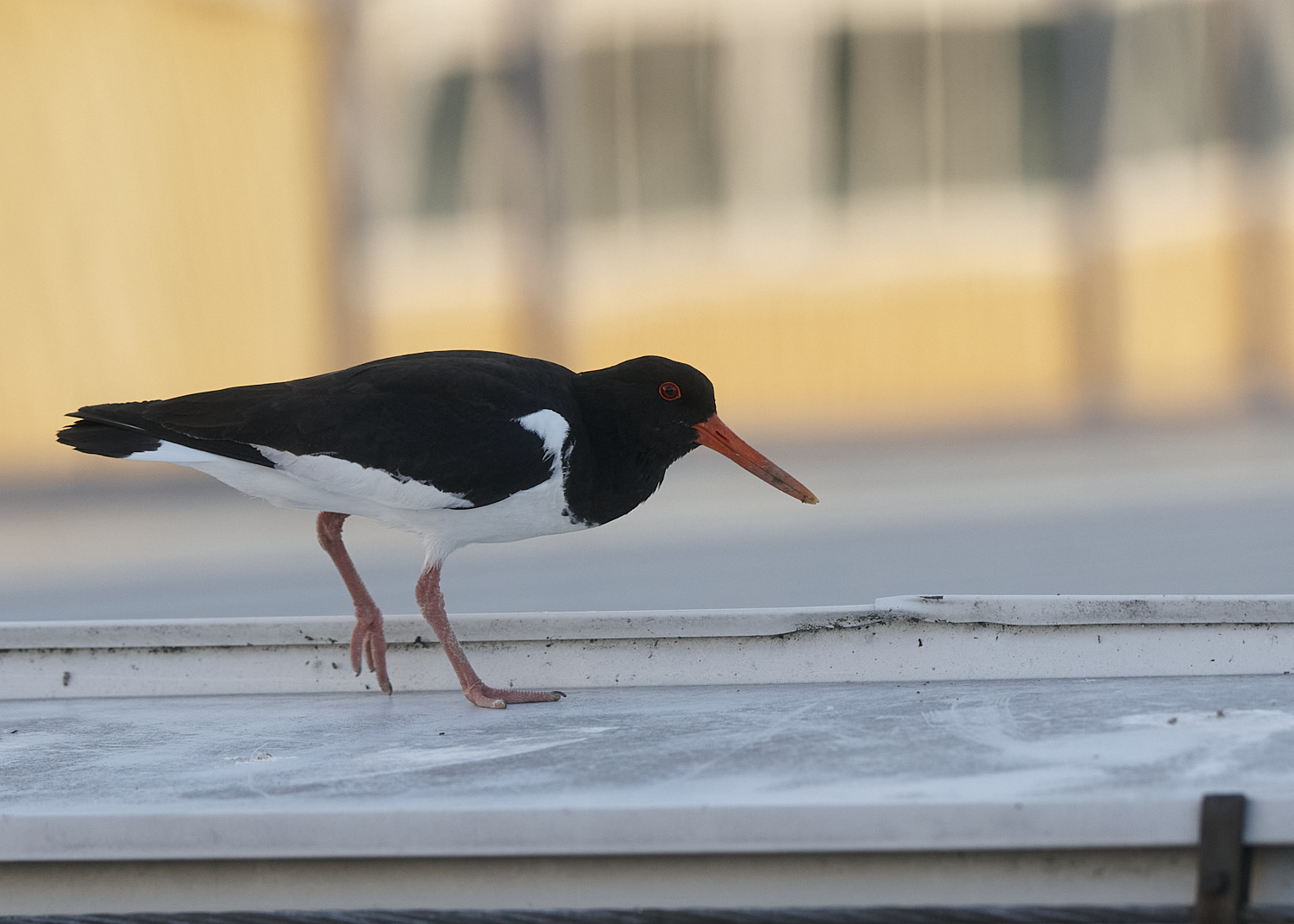
Oystercatcher
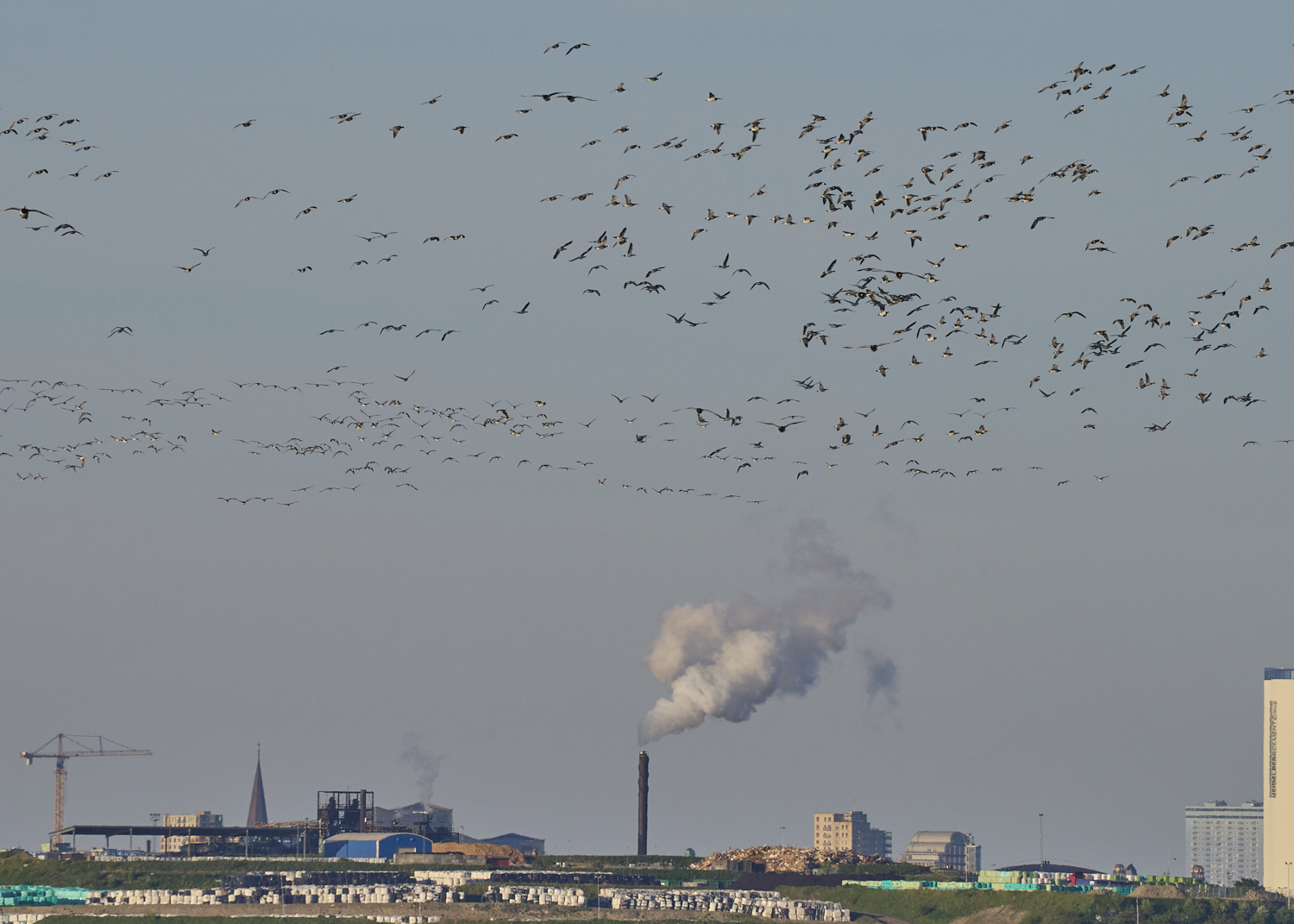
Barnacle Geese

Red-necked Grebe
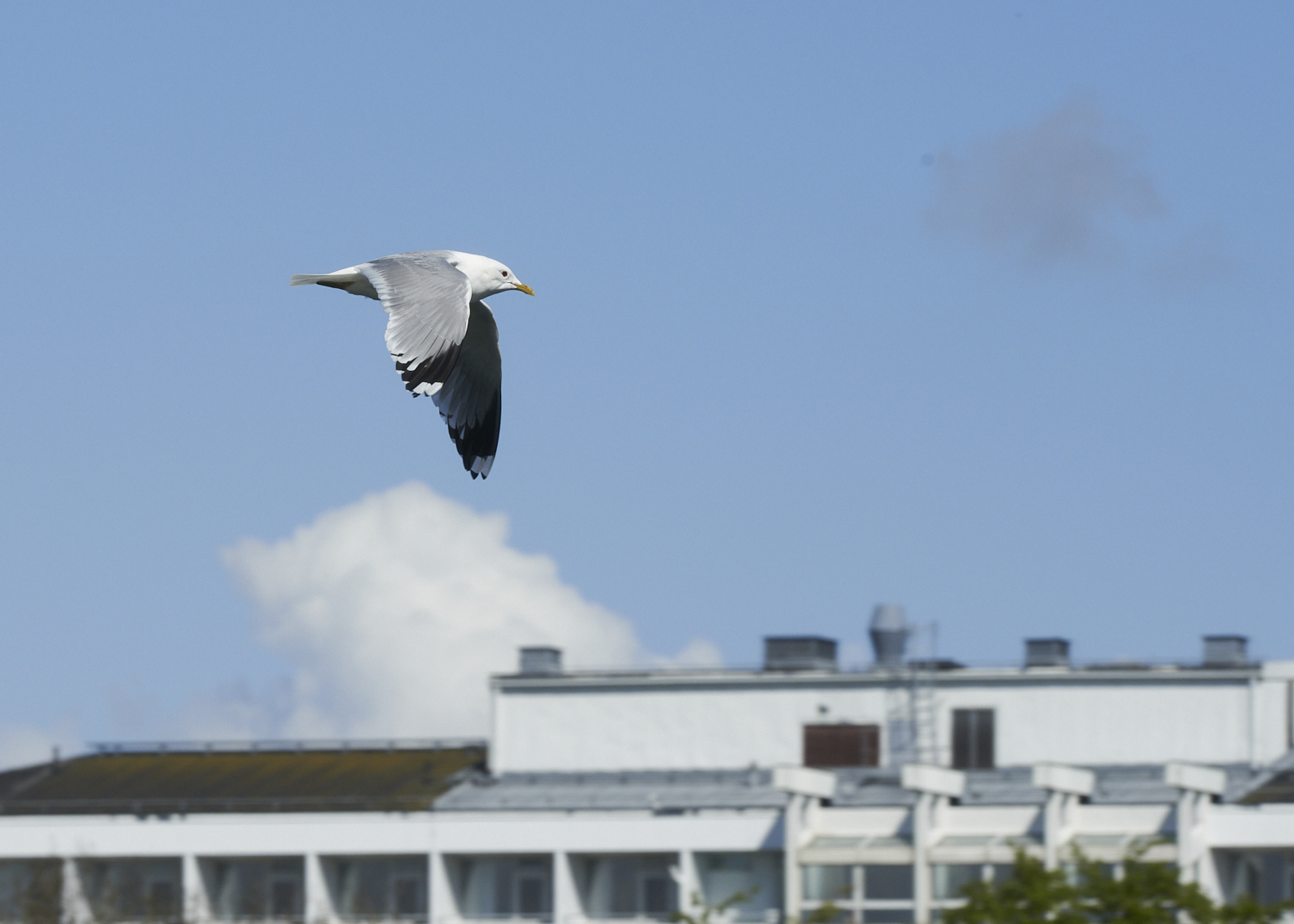
Common Gull

Barnacle Geese
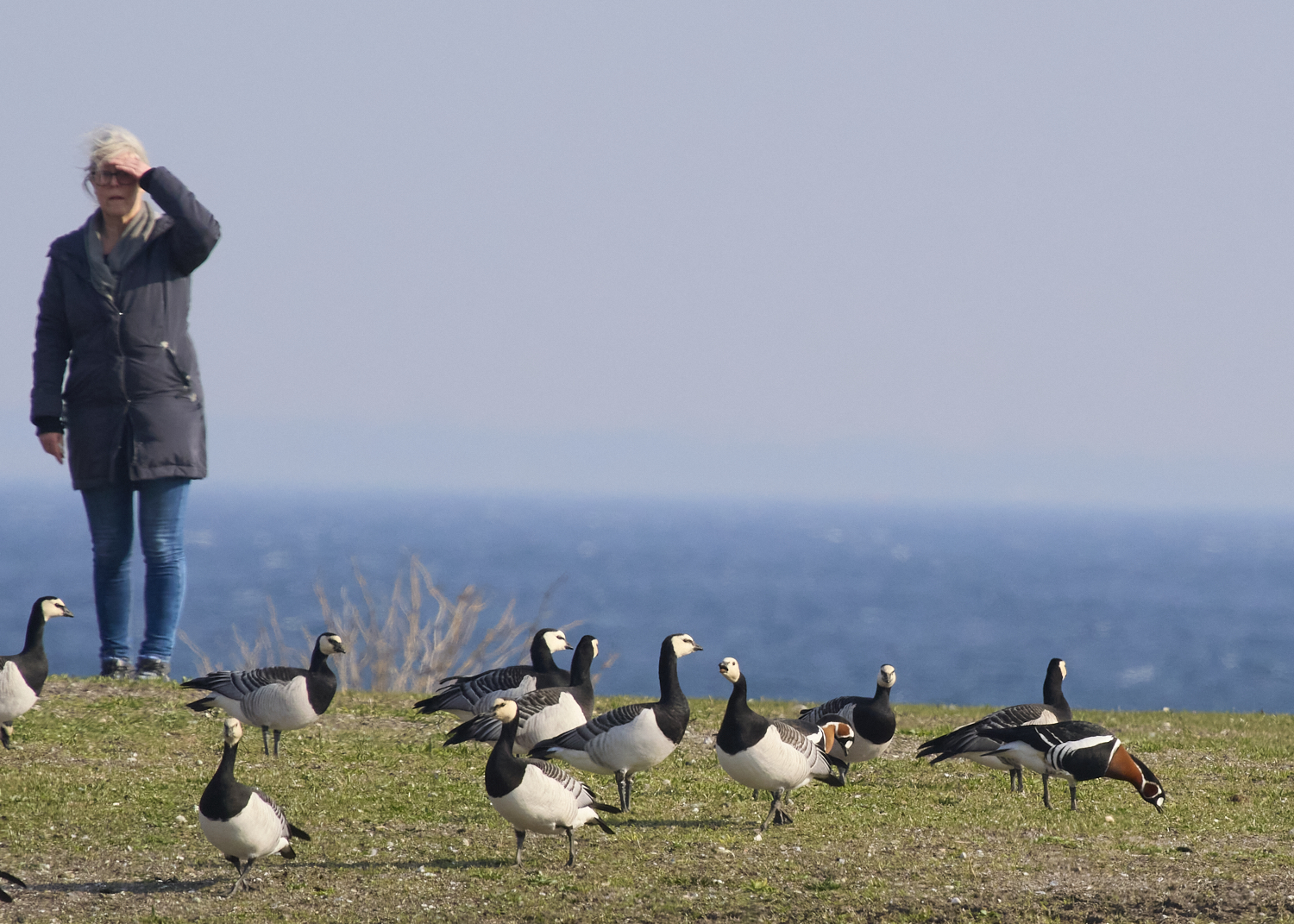
Barnacle Geese with two rare Red-breasted Geese
Every spring, a headline act unfolds in the city. Ravens nest in an old shipbuilding crane beside a waterfront residential zone, an urban first in Sweden. Unlike the domesticated Tower of London ravens, these are wild birds, voluntarily choosing Malmö’s industrial relics as breeding grounds.
The city’s beloved parks are no less impressive. Hammars Park, with its wild undergrowth, attracts songbirds like blackcaps, wood warblers, and goldfinches. Pildammsparken, with its elegant promenade and wide pond, plays host to ducks, gulls, and breeding great crested grebes showing off their curious greeting displays in spring. It’s a favourite among preschoolers, grandparents, and birders alike, offering easy access and rich wildlife. Slottsparken, meanwhile, offers a blend of trees and water that appeals to both breeders and migrants.
In late morning, gulls descend from the coast to bathe in the parks’ freshwaters. Tufted ducks and common gulls, with nesting grounds as far away as Siberia, make Malmö their winter base. Come late February, they’re joined by the first migrant lesser black-backed gulls, newly arrived from central and eastern Africa. Meanwhile, black-headed gulls spend the colder months here after journeys from Finland and the Baltics. Banded individuals, some as old as 30, have revealed fascinating life histories stretching across multiple cities and countries. The combination of being raised and spending the winter in highly urbanized habitats seems to be favorable to longevity.
St Pauli Cemetery, oriented north to south, is another seasonal hotspot, especially in spring. Here, you might glimpse the cryptic wryneck or the elusive ring ouzel, more commonly found in the remote fjells of summer. Redstarts regularly nest here too, making the cemeteries a true urban oasis.
Even Malmö’s high-rises play a part. Districts like Västra Hamnen, Dockan, and Limhamns Sjöstad resemble mountainous terrain to birds like the black redstart, which now echo their melodic calls through Malmö’s urban canyons. Some individuals even winter here, finding refuge in the evergreen ivy on buildings near the central station, alongside European robins.
The charismatic oystercatcher also makes its urban presence felt. Arriving in late February, they roost in flocks on jetties used by swimmers in summer before fanning out to nest on flat rooftops. Common gulls, meanwhile, often share these rooftops, while house martins and common swifts each have their architectural preferences. Clay nests on high buildings suit the martins, while the swifts prefer roof tiles on villas in Malmö’s western suburbs.
And let’s not forget the barnacle geese. Once Arctic-bound migrants, they now breed in Malmö in huge numbers, a mix of introduced birds and natural colonists. In May, local geese look skyward as their distant cousins pass overhead in dramatic, noisy formations, en route between the Low Countries and their Novaya Zemlya breeding grounds. Some Malmö-born geese have even been spotted in the Arctic, and vice versa.

Oystercatchers
Of course, the benefits of this biodiversity aren’t just for the birds. Access to urban nature is known to boost human well-being, and Malmö makes it easy to connect with the wild. Through the Vilda Malmö (Wild Malmö) program, residents can join free expert-led tours covering birds, bats, trees, marine life, and more, kept to small, intimate groups. For those who prefer to look for urban wildlife on their own, there are information signs placed around the city, with photos or drawings of the local fauna.
Malmö’s love of birds runs deep. Even its bird alert app, usually the domain of avid birders, has over 1,000 subscribers, proving that in this city, the skies above are just as captivating as the streets below.
While wetland ecosystems are increasingly being recognized as highly valuable natural assets that provide a wide range of benefits to urban communities, the services they provide are under immense pressure due to rapid urban expansion and human activity. Cities are uniquely positioned to drive local action to protect our wetlands.
Below are five key action areas for cities to mobilize urban communities for wetlands:
Integrate wetland management goals into municipal development plans, zoning regulations, and climate resilience strategies.
Advocate for wetlands as critical infrastructure in disaster risk management, emphasizing their role in flood mitigation, erosion control, and urban cooling.
Allocate funding for wetland restoration and maintenance as part of city budgets.
Highlight wetlands’ function as natural water filters, improving water quality for drinking and sanitation.
Educate communities about the importance of wetlands in regulating stream flow, preventing floods, and mitigating droughts.
Encourage partnerships between cities and water utilities to protect wetlands as vital water supply sources.

In the weeks to come, and during our meeting in Rome this February, I will work alongside Parties to build the trust and consensus needed to achieve Peace with Nature, ensuring that the goals and targets of the Kunming-Montreal Global Biodiversity Framework (KMGBF) translate into tangible action. Securing adequate and predictable financing will be central to our efforts, enabling transformative change for biodiversity while ensuring benefits for communities and ecosystems alike.
– said H.E. Susana Muhamad, Minister of Environment and Sustainable Development of Colombia and President of COP16.
Organize events such as guided wetland tours, birdwatching activities, and clean-up drives to connect urban communities with local wetlands.
Collaborate with schools and universities to use wetlands as outdoor classrooms for environmental education.
Celebrate World Wetlands Day by showcasing wetlands’ cultural, recreational, and ecological value through art exhibitions, storytelling sessions, and public campaigns.
Showcase wetlands’ role in carbon storage and their contributions to achieving climate targets at city and regional levels.
Promote the restoration of urban wetlands as natural climate buffers that reduce the impacts of extreme weather events.
Highlight their role in preserving biodiversity by creating habitat corridors that link urban green spaces and facilitate species migration.
Encourage eco-tourism and recreational activities like boating, fishing, and wetland safaris to generate local employment.
Support community-based initiatives in wetland restoration, creating jobs and fostering skills in conservation and sustainable resource use.
Showcase the agricultural and economic benefits of wetlands, such as fisheries, fertile soils, and natural resources, as integral to urban food security and poverty reduction.

In Mexico City, it is possible to observe 356 species of native birds, of which 47 species are in some local or international risk category. Of the total diversity, 120 species are resident. However, a large number of birds migrate or transit from North America to spend the winter, as the city is part of the central flyway, one of the four main routes. Due to this, it is possible to observe 235 species of birds that are in a migration category and that maintain resident populations in the city and also, 121 species that are exclusively migratory.
Migratory birds can find in Mexico City a variety of ecosystems such as forests, scrublands, wetlands and natural grasslands, as well as urban green areas where they can take refuge for several months and then return to their breeding areas. These natural ecosystems are protected in a System of Natural Protected Areas and of Environmental Value Areas, a Ramsar Site, two Important Bird Conservation Areas (IBA) and a complex network of urban green areas.
The Ministry of the Environment develops different activities to provide quality habitat where they can find places of refuge and resupply of food and water, so that they can survive and continue their trips. Hard work has been done restoring natural ecosystems and green infrastructure, establishing 44 million trees and other plants, as well as restoring more than 30 kilometers of rivers. In addition, community brigades are in charge of fire prevention and response, and the removal of waste and invasive plants. These activities are very important for the conservation of natural ecosystems and specifically for wetlands, since the water lily (Eichhornia crassipes) invades until it completely covers them, preventing the arrival of birds by perceiving it from the sky as a green area and not like a body of water.
Due to the lake origin of the city, 34 new wetlands (31.09 hectares) have been created and 722 hectares of these ecosystems have been restored, mainly in Xochimilco and Tláhuac, where the arrival of up to 220 species of birds has been recorded. Additionally, the Bird Beach has been created in the San Juan de Aragón Forest, which is visited by 192 species of birds.
30 million plants have been incorporated into conservation land and 14 million into urban land of 80 species, many pollinated by insects. More than 1,000 pollinator gardens and insect hotels have also been created, in collaboration with 979 trained women and community brigades, which represent a valuable source of resources for nectarivorous and insectivorous birds. This has been complemented by the promotion of agroecological practices in more than 12 thousand hectares and the recovery of 1 million square meters of chinampas, with the participation of more than 40 thousand people from ejidos and communities that inhabit these territories.
The biodiversity monitoring program developed by community brigades allows us to learn about the species that make use of green spaces, integrating citizens in bird watching and nature photography tours and other conservation activities. Thanks to the participation and interest of citizens in the care of urban wildlife, new species and large flocks have been registered.
Definitely, the birds that have surprised citizens the most are the American White Pelican, Wilson’s Phalarope and the Belted Kingfisher observed in wetlands and the flocks of Cedar Waxwing on urban land. Among the most charismatic insectivorous species are the Canada Warbler, Wilson’s Warbler, Hammond’s Flycatcher, Black-and-White Warbler and others.

The City Government of Puerto Princesa initiatives thru the office of the City Environment and Natural Resources Office (City ENRO):
Protected Biodiversity Areas
As the only Highly Urbanized City in the entire region of MIMAROPA, The City Government of Puerto Princesa find it critical to establish protected areas and other biodiversity reserves such as the Palawan Flora, Fauna, and Watershed Reserve (PFFWR), Magarwak Nature Research and Ecological Park (MNREP), Cleopatra’s Needle Critical Habitat (CNCH) and the Puerto Princesa Subterranean River National Park (PPSRNP) that help maintain natural ecosystems and support its community thru its ecosystem benefits. These areas harbor a rich diversity of flora and fauna, rivers, crees and streams, including endangered and threatened species, and serve as an important refuge for wildlife, including migratory birds. Protected areas serve as critical stopover sites where migratory birds can rest, refuel and replenish their energy reserves during long-distance migrations. These areas provide abundant food resources, safe roosting places, breeding grounds, and suitable habitat conditions for birds to recover from the ordeals of their flight during migration. By protecting these areas, Puerto Princesa ensures that migratory birds have suitable stop-over (resting) and nesting sites where they can “feed and rest” during their journeys.
Coastal Area Maintenance
Activities like mangrove planting through the “Love Affair with Nature” and CGPP’s Bays Conservation through coastal clean-up initiatives under “Save the Bays”, now on its 9th episode, contribute to the health of coastal ecosystems. Mangroves and bays are critical habitats for insects, numerous marine living things and other small organisms that form the base of the food chain. Puerto Princesa boasts a sprawling coastline spanning 416 kilometers, showcasing a rich diversity of landscapes. Additionally, the mangrove areas within the city cover a total expanse of 6,281 hectares. By maintaining these coastal ecosystems, Puerto Princesa City supports the availability of insects, which in turn supports migratory birds that feed on them.
Love Affair with Nature under City Ordinance No. 287, passed on December 26, 2005, is one of the City Government of Puerto Princesa’s local policy that is focused on rehabilitating and enhancing coastal area management. The said ordinance declared every 14th of February a yearly activity were the large City community participate in mangrove planting. Dubbed and institutionalized as “Love Affair with Nature”, it expanded Valentine’s Day’s expression of love from the customary person-to-person and added a concern to protect mother nature and as a continuing call to ensure the protection and sustainable use of the natural resources. The event heightens awareness of the people on the ecological role of mangroves and other coastal ecosystems in the vital web of life, (Hon. Feliberto S. Oliveros III, December 26, 2005, City Ordinance No. 287 of the 11th Session of the Sangguniang Panlungsod of the City of Puerto Princesa).
Establishment of Nurseries for (Endemic/Local) Forest Tree Species
Establishing nurseries for (endemic) forest tree species and fruit tress not only supports reforestation but also enhances the biodiversity of the locality. Trees provide a natural habitat for a variety of insects, creating a conducive environment for their reproduction and survival. As these forests grow and mature, they become attractive destinations for migratory birds, providing food and shelter. The maintenance of these nurseries provides support to our continuing efforts to reforest denuded areas, bolster private reforestation endeavors and help in providing accomplishment of the exacted Corporate Social Responsibility of our business community. The game plan is to provide these seedlings for free.
Reforestation efforts in Puerto Princesa City is already institutionalized as early as the year 1991 and celebrated annually thru an event called “Pista Y ang Cagueban” (Feast of the Forest) This yearly activity helped restore degraded areas, providing habitats for countless species of plants, animals, insects, fungi, and microorganisms. The efforts help restore and expand habitat for various species of endemic flora and fauna, promoting biodiversity conservation and supporting ecosystem resilience. This activity culminates the consciousness of the City’s inhabitants and a reminder of their responsiblity to help the Government restore its natural forest. City Ordinance No.216 formalized this activity and its annual observance.
Avian Fauna Assessment in Protected Areas and Wetlands.
Given that birds are good barometer of a healthy environment, henceforth, the City Government of Puerto Princesa thru the Office of the City ENRO, essentially focuses on the conduct of periodic annual bird assessment to provide us key information, and data of these avian species to help us understand their role in our ecosystem. The information provided by this activity inculcate in our consciousness the importance of conserving avian fauna biodiversity, maintaining a balanced and healthy ecosystem, and sustaining the benefits that birds provide to society. Bird assessment involves evaluating the status, abundance, distribution, and trends of the bird population. Assessing bird populations such as migratory birds help prioritize conservation efforts by identifying bird species at risk of decline, also, monitoring bird populations provides insight into the overall condition of an ecosystem.
We made an extra step forward by embracing avian eco-tourism in the City to support our local bird assessment effort. We initiated in partnership with the Puerto Princesa Subterranean River National Park (PPSRNP) the PPUR International Bird Photography Race in November 2015 and is still proceeding up to this year. This annual assessment event under the auspices of an eco-tourism activity, provided us records of both endemic and migratory birds. Data of migratory birds during this activity include rare and first country records. Additionally, the PPUR-IBPR contributes to the local circular economy of the City.
We participate in the annual Asian Waterbird Census with the National Government thru the Department of Environment and Natural Resources (DENR). City ENRO’s participation in these monitoring efforts contributes to the broader conservation goals and supports the establishment of key areas for migratory birds such as the Snake Island found in Honda Bay of Puerto Princesa City. Regular monitoring of migratory bird populations helps assess the health of habitats and identify the need for conservation efforts to preserve biodiversity. This data is crucial for understanding their migratory patterns, identifying threats, and implementing effective conservation strategies.
Environmental enforcement
The City Government of Puerto Princesa have invested in the field of enforcement. placed under the Office of the City ENRO are the Bantay Gubat (Forest Guardians), Bantay Dagat (Sea Guardians) and Bantay Bakawan (Mangrove Guardians). They are the government arm to impliment and impose obedience to the various environmental laws of the Republic and local policies. Their activities include the deterrent of wildlife trafficking, IEC and cooperation with local partners and the community.
Collaboration with Key Agencies: Working with organizations like DENR and PCSD/S promotes collaboration and the sharing of resources. It promotes a unified approach to bird conservation by combining expertise and data from various stakeholders. Through this collaboration, the following benefits are achieved:
Contributing to Conservation Outcomes: It is our objective to directly contribute to the conservation of migratory birds and their habitats. We are exerting efforts to work with other key partners and support local as well as global community to broaden our environmental objectives, enhance our capability and approach in biodiversity preservation, and widen our understanding of ecosystem health, and the sustainability of natural resources. The current effort of the City ENRO is the establishment of a new RAMSAR site within urban district. We are excited to pursue this project in collaboration with our local and international partners.

Cascais Municipality is located on Portuguese coastline, bordered by the Sintra mountains at the north side, and the Atlantic Ocean in the west and south sides. A large portion of municipality, over 28% of territory (2641ha), is inserted in Sintra-Cascais Natural Park and is part of Natura 2000 Network (Sintra/Cascais SCI PTCON0008), a protected area that extends from the coast to the mountains and interior plateau, with several different habitats present, including heathlands, mixed oak and pine forests, mediterranean matorral, dry grasslands rich in orchids, riparian forests and humid tall grasses, sand dunes and costal cliffs and reefs. Ecological network also includes small rivers inside urban areas, urban parks and peri-urban rural areas, as well as a local coastal protected marine area (AMPA). In addition, Cabo Raso Marine Site (PTZPE0061) is located along Cascais coastline and is an important feeding area for pelagic and coastal birds. All these natural areas provide stopover sites for several species during their spring and post breeding migrations. Over 130 migratory bird species have been recorded in Cascais, and around 40 migratory species recorded in Cascais municipality are insectivorous.
Cascais Ambiente is the municipal company for waste management, urban cleaning and ecological infrastructure management, and has been carrying out major efforts for keeping and improving city health, environment, natural resources and quality of life. Among many projects, several actions have been helping to preserve and improve birds and insects habitats and food sources, directly and indirectly.
Habitats management, ecological restoration and adaptation to climate change
Cascais Ambiente is responsible for managing and restoring several areas within Sintra-Cascais Natural Park. Quinta do Pisão, a visitation area rich in biodiversity has been actively managed and restored, acting as a pilot area with successful practices expected to be replicated into more areas. It is already possible to see the effects of these practices, as Quinta do Pisão supports highly diverse insect and bird populations, with over 90 bird species recorded during annual monitoring. Recently, Cascais Ambiente started a new project, LIFE ResLand, aiming to adapt natural park and rural peri-urban landscape to climate change, with actions focused on building resilience to wildfires and to improve and restore ecosystems. Major actions being implemented that are expected to promote biodiversity include:
Other habitat management actions include:
Raising awareness and involving the community for nature conservation
Cascais Ambiente has also been caring out extensive work with schools and local communities. Some examples of actions helping to preserve bird and insect habitats and increase awareness for their importance include:

40% of all plant and animal species live or breed in wetlands.
Wetlands play a significant role in supporting ecosystems and biodiversity, and they are deeply connected to human well-being. Although they cover only around 6 percent of the earth’s land surface, 40 percent of all plant and animal species live or breed in wetlands; and about one in eight people on earth depend on wetlands for their livelihoods (United Nations, 2024). Despite the benefits for both the environment and communities, wetlands face critical threats due to anthropogenic influences and are the planet’s most threatened ecosystem. This World Wetlands Day is an opportunity to recognize the value of wetlands and to advocate for better conservation efforts.
Critical to environmental sustainability, wetlands sequester more carbon than any other ecosystem (NOAA, 2023), thereby mitigating climate change. They also buffer against climate change impacts and provide resilience against extreme weather events such as storm surges and flooding. Furthermore, they serve as vital habitats for diverse species, supporting fish, reptiles, migratory birds, and mammals.
Wetlands are essential for key municipal functions, naturally purifying water, controlling floods and supplying sustainable fresh water. They foster economic and livelihood activities like tourism, fisheries, and agriculture, contributing to the overall prosperity of communities around the globe. Based on their central life-sustaining role for so many communities, wetlands are cherished by communities worldwide, enhancing social well-being, offering recreational opportunities, holding deep cultural and spiritual significance, and fostering community well-being and resilience.
Despite their myriad benefits, these valuable ecosystems are under siege from pollution and habitat loss from land use change. In the last five decades, over 35% of wetlands have been lost, significantly jeopardizing the ecosystem services and benefits for plants, animals, and human communities. With urban populations expected to grow from 55% (current) to 68% by 2050, wetland ecosystems are considered the most threatened ecosystem (Ramsar. 2021).

Wetlands are essential for key municipal functions, naturally purifying water, controlling floods and supplying sustainable fresh water.

There is an urgent need for drastic conservation efforts to protect these valuable ecosystems.
For cities and regions, recognizing the relevance of wetlands in urban and environmental planning is paramount. Integrating wetland management goals into municipal planning, policies, and decision-making processes is necessary for sustainable development.
In 2023, CitiesWithNature partnered with the Ramsar Convention, the UN Decade on Ecosystem Restoration and ICLEI CBC to develop a poster and fact sheet on the value of wetlands for cities. These resources shed light on the functional benefits of wetlands in terms of water resources, climate regulation, livelihoods and poverty reduction, healthy ecosystems and biodiversity, job creation and upskilling, and culture, recreation and education. The poster intricately illustrates these processes, for example, how wetlands support urban heat mitigation by cooling surrounding areas and providing valuable spaces that bolster a region’s ability to adapt and withstand the adverse impacts of a changing climate. The fact sheet also provides useful recommendations on how cities can enhance and protect the benefits supplied by these vital ecosystems, such as conducting a stocktake of past and current wetlands management, developing integrated development plans and allocating appropriate budgets, and regulating land-use and development.

Given the critical role wetlands play in enhancing the quality of life for cities and communities, it is imperative that we recognize the value of wetlands, integrate wetlands protection into planning and policy agendas, and support active participation in conservation efforts and sustainable practices. World Wetlands Day serves as a call to action to secure a sustainable and resilient future for wetlands and the communities they support.
References:
NOAA. 2023. Coastal Blue Carbon. Available online: https://oceanservice.noaa.gov/ecosystems/coastal-blue-carbon/#:~:text=Current%20studies%20suggest%20that%20mangroves,equivalent%20area%20than%20tropical%20forests.
Ramsar. 2021. Global Wetland Outlook: Special Edition 2021. Available online: https://www.global-wetland-outlook.ramsar.org/report-1
United Nations. 2024. Life interlaced: wetlands and people. Available online: https://www.un.org/en/observances/world-wetlands-day#:~:text=Though%20they%20cover%20only%20around,for%20tourism%20and%20for%20jobs.
The UN 2023 Water Conference – formally known as the 2023 Conference for the Midterm Comprehensive Review of Implementation of the UN Decade for Action on Water and Sanitation (2018-2028) – took place in New York, from 22-24 March 2023, and was co-hosted by Tajikistan and the Netherlands, with the UN Department for Economic and Social Affairs (UN DESA) as Secretariat. To catalyze action, the Conference sought voluntary commitments from Parties to the Water Action Agenda, to urgently scale up action to address the water and sanitation crisis and ensure equitable access to water and sanitation for all (Sustainable Development Goal 6).
“This is more than a conference on water. It is a conference on today’s world seen from the perspective of its most important resource.”
– UN Secretary-General Antonio Guterres
The Conference managed to generate more than 700 commitments aimed at driving transformation towards a water-secure world, which now form part of the Water Action Agenda, representing the global community’s resolve to address the water challenges through a more coordinated and results-driven approach.

On 24 March, ICLEI through CitiesWithNature and RegionsWithNature, convened an online side-event as part of the conference titled, “CitiesWithNature and RegionsWithNature: Connecting Water and Nature to accelerate local and regional resilience”. The side-event took place in line with the UN Water 2030 Conference which was held in New York with the aim of accelerating action towards the achievement of SDG6.
The aim of this session was to: connect the agendas of water and nature for accelerated local and regional action, building momentum towards the achievement of SDG 6 & 11; provide a platform for cities and regions to connect and share best practices and lessons learnt on water and nature; and promote local and regional resilience actions from leading CitiesWithNature and RegionsWithNature representatives.
To this end, the session, moderated by Stefania Romano – Global Coordinator, CitiesWithNature and RegionsWithNature – showcased examples of the interconnections between biodiversity and water and of different biodiversity management issues and/or challenges which are relevant to the water agenda. These cases, summarized below, were presented by CitiesWithNature cities and RegionsWithNature regions and speakers from Regions4 and other subnational governments – as CitiesWithNature and RegionsWithNature are important platforms for showcasing best practices and case studies that can be scaled out to other cities and regions.

Caroline Daguet
Conservation Biologist, Ministry of the Environment, Fight against Climate Change, Fauna and Parks
Government of Quebec
The littoral zone of Saint Pierre is located in the St Lawrence river in Quebec Province, in Canada. The site is a wetland of importance and both classified as a Ramsar site and UNESCO Biosphere Reserve. The fertile land has historically been used for corn, and more recently soybean, agriculture which has resulted in drainage of the river, habitat loss, shore erosion, siltation, pollutant leaching as well as invasive alien species taking over. Given the extent of the threat to some species, a moratorium was placed on sport and commercial fishing of the yellow perch (Perca flavescens) in 2012.
The sustainable management project of the Lake Saint-Pierre littoral zone is aimed at establishing sustainable agriculture to protect the lake’s ecosystem. The project has led to the development of a floodplain intervention strategy that fosters sustainable and adapted agricultural practices while maintaining the fragile ecosystem of the lake and supporting the restoration of priority sites.
The success of the project can be attributed to the inclusion and collaboration between academia and government ministries and a commitment to involving farmers from the beginning of the project. The project not only focused on crop, soil and water studies, but also included wildlife research and monitoring projects focusing particularly on fish, birds and insects. In addition, the project focused on the governance of the ecosystem – concluding that it is critical to involve regional and local government authorities and indigenous communities in the process.
This case study forms part of the Regions4 database and can be viewed on the RegionsWithNature platform. Quebec has been involved in the database since its launch in 2016 and has been contributing to knowledge-sharing and learning from other subnational governments. Quebec is also a founding member of RegionsWithNature, officially launched in Montréal in Québec at the CBD COP15 in 2022.
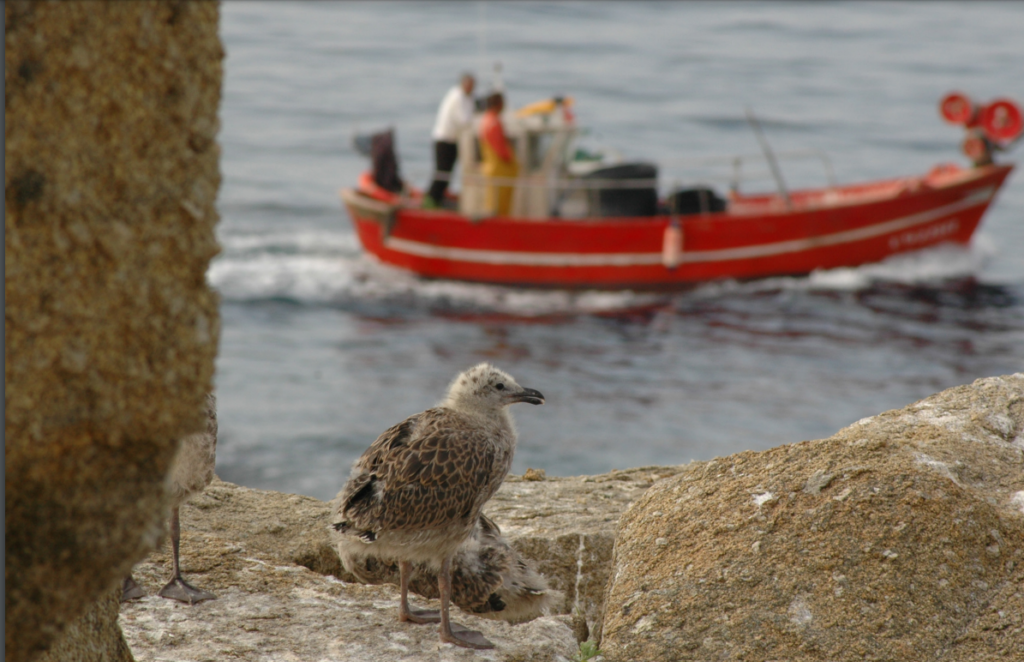
Flora Aguilera
Communications, Ministry of Climate Action, Food and Rural Agenda
Government of Catalonia
The Litoral Baix Empordà is a special protected marine area and site of community importance located in Costa Brava, a coastal region of Catalonia in north-eastern Spain. To facilitate co-management of the Litoral del Baix Empordà, the Government of Catalonia formed a board to create a permanent space of participation where proposals can be debated and concretized to improve the management and organization of maritime uses and activities in the area.
The governance model is particularly focused on making these uses and activities more compatible with the area’s natural heritage. Specifically, through stakeholder engagement, the model aims to ensure the conservation and improvement of the natural, cultural and landscape heritage of the area to both safeguard its socioeconomic activity and protect its cultural heritage.
The success of this model has been its bottom-up approach with stakeholders, such as the scientific community, civil society, government administrations, and all critical stakeholders from the blue economy sector. This has created a safe and trustworthy environment that has enabled addressing common problems and discrepancies, ultimately benefiting the protected area. As a result, environmental management has shifted from maintenance and prevention to an Action Plan that is collaboratively designed. Best practices based on this co-management project is also available on the Regions4 database and the RegionsWithNature website.
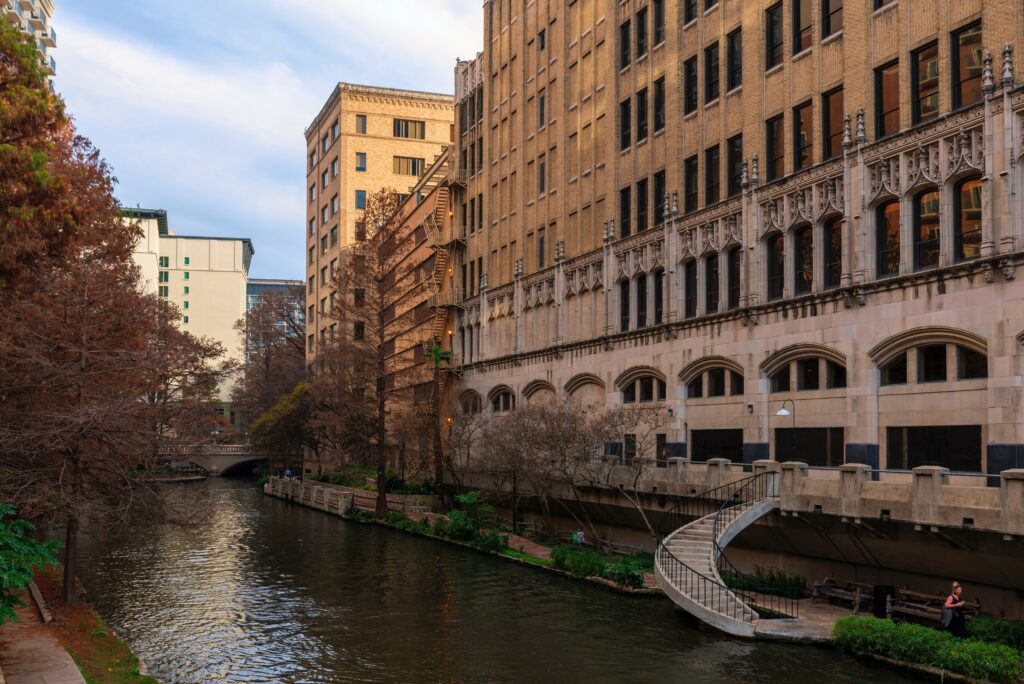
Julia Murphy
Deputy Chief Sustainability Officer
City of San Antonio Office of Sustainability
San Antonio is a CitiesWithNature pioneer city located in Texas state, USA. As a coastal state, Texas is surrounded by water, but its inland cities experience significant water shortages. Moreover, the Texas Water Board’s projections show that the state’s water supply will decline by 18% between 2020 and 2070. One of the main causes of this decline is the depletion of aquifers from pumping for industrial use, occurring alongside land-use change as a result of agriculture and ranching.
Another concern for water supply across the state is population increase, which is expected to rise to 73% between 2020 and 2070. This will be exacerbated under future climate change, as the state’s already hot climate becomes even hotter, and the City of San Antonio in particular will experience reduced rainfall, more frequent and longer droughts, and reduced water and food security.
Beyond needing drinking water and water for household use, this resource is also of economic importance, given that the San Antonio River is a tourist attraction, with 11.5 million people visiting the San Antonio River Walk annually, providing 31,000 local jobs. San Antonians understand the value of water and its conservation has become entrenched in the city’s culture. Conservation – water that is not used – has been considered a water supply source since 1993.
However, water conservation is contingent on access to open land and the space required for rainfall to replenish aquifers. Since nearly 95% of land in Texas is privately owned, the regional and city governments have had to work closely with landowners to protect their land for water conservation through the Texas Agricultural Land Trust.
For the past 20 years, San Antonians have been voting to tax themselves through sales tax initiatives to conserve open land on usually privately owned land over the main aquifer to protect the water source. Water conservation is further achieved through education, incentives, and reasonable regulation. Read more about the statewide investment into water conservation that will be voted on later in 2023, here.
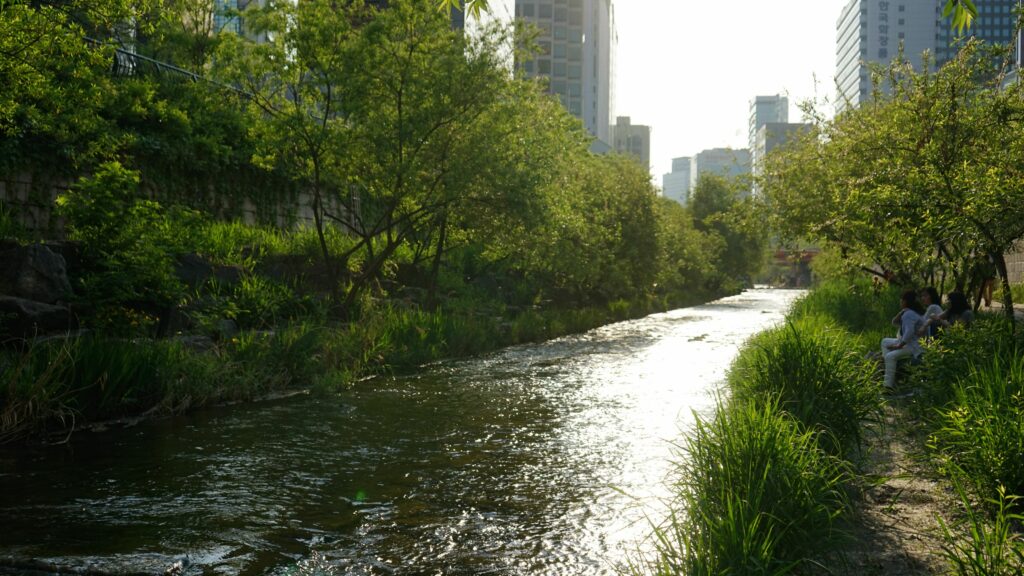
Ernita van Wyk
Senior Professional Officer: Social-ecological Systems
ICLEI Africa
Johannesburg is the biggest city in South Africa and also the economic hub of the country. As a result of the long-term decline of water sources in South Africa’s cities, and projected future climate change impacts, the City of Johannesburg has responded to its current water challenges by investing in two tools: The City of Johannesburg water security strategy (city-wide); and the City of Johannesburg pilot catchment management plan (smaller scale).
The COJ water security strategy
A water secure Johannesburg, as per the UN Water definition, would mean: The City of Johannesburg will have the capacity to safeguard sustainable access to adequate quantities of acceptable quality water for sustaining livelihoods, human well-being and socio-economic development and preserving ecosystems.
To achieve this, the City government co-produced a strategy with relevant stakeholders to secure water supply; manage water demand and losses; ensure access to safe, reliable and equitable water services; promote resilient, liveable and sustainable urban water environment; manage the water system’s knowledge and data; nurture a water conscious society; and achieve coordinated good water governance. A working group was created under each theme, which has culminated in 67 actions for the City to take. A key part of the strategy’s approach has been to identify how different municipalities and sectors work with the same water source, to ensure effective cross-sectoral collaboration based on an integrated approach to water management.
The COJ pilot catchment management plan (Jukskei River)
The aim of this plan was to develop a tool that promotes integrated catchment planning and management practices, linking various catchment aspects in an integrated manner, at the sub-catchment scale. This includes integrating land use, river health and stormwater management for Johannesburg’s Jukskei River catchment. The Jukskei River catchment experiences similar issues to other urban catchments, including: a demand for settlement that leads to encroachment into river courses; drought; increased flooding; pollution; aging infrastructure; degrading open spaces; poor amenity value; and downstream obligations, given that the Jukskei catchment is located relatively upstream.
The catchment management plan was based on the “water-sensitive city” paradigm, which states that municipal water services are provided against the backdrop of challenging environmental impacts. In response, the plan used a hydrological model to guide extensive stakeholder engagement. Through this process the City realized the significant opportunity for rainwater harvesting and the necessity to start making the catchment area more “spongy” through nature-based solutions – to improve the replenishment of aquifers but also to reduce flooding. Lessons learned and best practices can be found in this CitiesWithNature Catchment Management in Your City Guide, which was launched in this UN Water conference side-event.
The side-event concluded around the topic of advocacy for water – a universally understood rallying point for mobilizing actions, particularly when climate change is not accepted as a point of advocacy. The panel also emphasized the need for a stronger connection between water and ecosystems, and connecting that with human health.
UN Biodiversity COP15 and Water
Water conservation is included in the newly adopted Kunming-Montreal Global Biodiversity Framework (GBF), for example, Target 3 calls for the effective conservation and management of at least 30% of terrestrial and inland water, especially areas of particular importance for biodiversity and ecosystem functions and services, and Target 2 calls for the restoration of 30% of degraded terrestrial, inland water, and coastal to enhance biodiversity and ecosystem functions and services, ecological integrity and connectivity by 2030.
Additionally, Target 12, which is specifically aimed as cities, calls for significant increases in the area and quality and connectivity of, access to, and benefits from green and blue spaces (referring to water bodies such as wetlands, rivers, mangroves etc) in urban and densely populated areas sustainably, by mainstreaming the conservation and sustainable use of biodiversity, and ensure biodiversity-inclusive urban planning, enhancing native biodiversity, ecological connectivity and integrity, and improving human health and well-being and connection to nature and contributing to inclusive and sustainable urbanization and the provision of ecosystem functions and services.
Water targets on the CitiesWithNature Action Platform
The CitiesWithNature Action Platform provides a platform where cities can make their commitments for nature (as referenced in Plan of Action action area 7) and set local targets to contribute to the GBF targets within the framework of the National Biodiversity Strategy and Action Plan of their country (NBSAP). The Action Platform is aligned with the 2030 Kunming-Montreal Global Biodiversity Framework targets, and provide several options for taking action and making commitments at the local level that relate to water such as “Restore and/or rehabilitate terrestrial, freshwater and coastal ecosystems”; or “Reduce water pollution by biocides and excess nutrients from domestic and industrial sources to protect ecosystems and people’s health.”
The first-ever Pavilion for Subnational Governments and Cities at UN CBD’s COP15 not only created a home for the subnational and local governments constituency during the conference, but also offered a platform for the launches and announcements of a range of initiatives. During China Day on 13 December 2022, a new initiative titled “Biodiversity Charming City” – operated by ICLEI and China Environment News – announced six Chinese cities who achieved the Charming Cities title, namely: Chengdu, Kunming, Huzhou, Jiaxing, Nanyang, and Shenzhen. The initiative is developed to recognize those cities who have achieved remarkable progress and created best practices in biodiversity conservation at the local level in China. These six cities, which have all joined the CitiesWithNature partnership initiative, are currently implementing numerous biodiversity conservation projects, which are highlighted below.
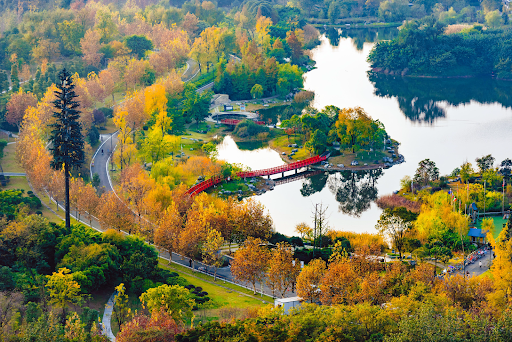
Chengdu City, the capital of Sichuan Province, is a mega-city with a permanent population of 21,192,000 with an urbanization rate of 79.5%. As an important high-tech industrial base in China, its GDP ranked 7th in the country in 2021. Chengdu is also one of the 34 biodiversity hotspots in the world, and rich in endemic and rare species, hailed as the “Garden of Western China” and the “Land of Abundance”. The city has received several titles for its biodiversity, including National Model City for Environmental Protection (2005), “National Forest City” (2007) and in 2020, the Chengdu Research Base of Giant Panda Breeding was granted the title of “National Advanced Collective in Scientific Popularization”
Case study: Fireflies nestling in Tiantai Mountain-lighting up ecological protection
Tiantai Mountain, 110 kilometers from downtown Chengdu, is home to more than 20 kinds of fireflies, with the leading number and species nationwide. Fireflies require very demanding conditions for survival – including high air and water quality. As a result, these insects are regarded as a visual biological indicator. To protect firefly resources and create a viewing base for eco-tourism, Chengdu City prioritizes science-based approaches to ecological conservation and sustainable development.
By 2021, with a forest coverage of nearly 95%, Tiantai Mountain greatly improved the conditions for fireflies to survive, attracting more and more “starry” fireflies to settle in Tiantai Mountain along with many wild animal species. Through the continued protection and cultivation of the area, Tiantai Mountain has been honored as a National Scenic Area, National Forest Park and National 4A-Class Tourist Attraction, strengthening the city’s tourism-based economy.
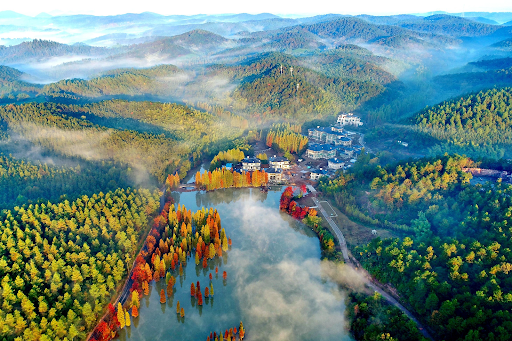
Huzhou is an important ecological conservation area and ecological barrier in the Yangtze River Delta region, with a forest coverage rate of over 48% and a wetland area of 47,800 hectares. The city has formed a wildlife habitat protection system with seven national nature reserves at the core, supplemented by wetland parks and forest parks. In 2013, Huzhou was awarded the title of “National Forest City”, and in 2022, it was approved to set up a sustainable development innovation demonstration zone.
Case study: Anji County, Huzhou City – bamboo ecology and economy in the “Hometown of Chinese Bamboo”
As the “Hometown of Bamboo”, Anji County in Huzhou City attaches great importance to biodiversity conservation. It actively promotes the transformation of bamboo–broad-leaved forests and the practice of interplanting in bamboo forests, transforming moso bamboo species, and cultivating a vast bamboo sea to secure a habitat for wild animals. Simultaneously, it uses bamboo to sequester carbon and increase carbon sinks for sustainable development. With the advantage of rich bamboo forest resources, Huzhou City has established the world’s first moso bamboo forest carbon flux observation system in 2010. In 2016, Anji County developed and completed the “Methodology of Bamboo Forest Operation Carbon Sink Project” and the country’s first bamboo forest operation carbon sink Chinese Certified Emission Reduction (CCER) project. Anji County’s bamboo industry offers bamboo structural materials, decorative materials, daily necessities, fiber products, biological products, and bamboo wood machinery, as well as crafts and food made of bamboo shoots. In 2021, Anji bamboo industries raked in 4.14 billion yuan in total, creating nearly 30,000 job opportunities.
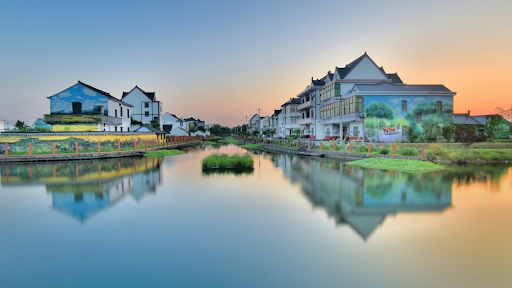
As one of the important cities in the Yangtze River Delta, Jiaxing is home to 5.4 million permanent residents. In the past five years, Jiaxing has invested more than 16 billion yuan in ecological protection and environmental management. The city has more than 3,000 species, including more than 1,000 species of terrestrial vascular plants, 300 species of terrestrial vertebrates, 600 species of insects and more than 1,000 species of aquatic organisms. In 2019, Jiaxing was named the “National Water Ecological Civilization City”, and in 2021, it was approved as a national ecological civilization construction demonstration zone.
Case study: South Lake Park – underwater forest green corridor around the lake
Jiaxing’s South Lake is a water storage hub for major local rivers. In 2020, Jiaxing South Lake District created a pilot water ecological environment demonstration zone in Zhejiang Province, to solve the problems of turbid water bodies and fragile water ecosystems, kicking off the South Lake Ecological Restoration Project. As a result of significantly improved water quality, the transparency of the lake was enhanced and resurging submerged plants in the South Lake area – which had almost entirely disappeared – now cover an area of 1.48 square kilometers, accounting for 28.5% of the water area, and forming a green corridor around the lake.
Jiaxing City has built the “South Lake District Water Digital Support System”, which is the first successful application of using underwater acoustic measurement technology to ensure high-precision and all-terrain measurement of river networks in the plain. This enables the underwater measurement and monitoring of underwater topography of rivers and lakes in the South Lake District, projected visually, to support effective policy-making to solve underwater problems.
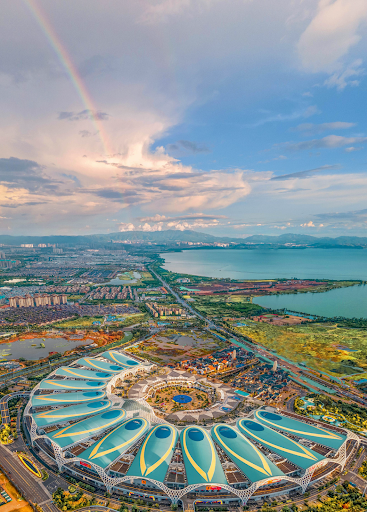
Kunming is the capital city of Yunnan Province – the richest biodiverse region in China and a global biodiversity hotspot – and host city to the UN CBD COP15 Part 1. By the end of 2021, Kunming had a population of 8.5 million long-term residents, of which 6.84 million are urban residents, accounting for 80.5% of the permanent residents population. Kunming’s complex and diverse topography, numerous lakes and rivers, and sound hydrothermal conditions have fostered rich biodiversity. In 2013, Kunming was named the “National Forest City”, in 2009, the “National Garden City”. and in 2022, Kunming was named the “National Greening Advanced Group” by the National Forestry and Grassland Administration.
Case study: Nature-based solutions – biodiversity restoration of Dianchi Lake
Dianchi Lake is the biggest lake in Kunming, serving 64% of the city’s population and 77% of the total economy. Since the 1970s, due to the rapid development of industry and agriculture around the lake, reclamation of land from the lake, and population growth, Dianchi Lake has been severely polluted by sewage. Recently, the Kunming Municipal People’s Government has implemented the eco-environment restoration of the lake, to improve harmony between the people, city, lake and industry.
Kunming has made space for Dianchi lake by returning ponds, farmland and housing to the lake through 90 km of breakwaters. The city has also built an ecological belt, including lakeside wetland, ecological forest, and naturally restored lake wetlands, effectively improving the living environment of wild animals and plants, and greatly improving the biodiversity of Dianchi Lake. At present, the natural shoreline rate of Dianchi Lake has reached 89%, forming a basically closed ecological belt around Dianchi Lake.
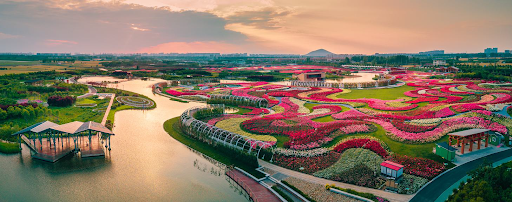
Nanyang City is the geographical and cultural center of China, and home to the Funiushan Global Geopark and Baotianman Biosphere Reserve. In 2018, Nanyang City was approved as a national forest city, a national model city for greening, and a national pilot city for water ecological civilization. In 2021, the case of “Conservation and Restoration of Water Sources in the Middle Route of the Danjiangkou South-to-North Water Diversion Project in Henan” was included among the “100+ Biodiversity Positive Practices and Actions around the World” by the UN. Finally, in 2022, Nanyang was rated as one of the first national pilot zones for ecological progress.
Case study: Ecological Restoration of Water Sources in the Middle Route of the Danjiangkou South-to-North Water Diversion Project in Henan
Henan Danjiang Wetland National Nature Reserve is one of the richest biodiverse areas in Nanyang and crucial to providing safe drinking water for nearly 79 million residents living in Beijing, Tianjin, Hebei and Henan. However, the reservoir area of Danjiangkou Reservoir has a highly fragile ecological environment, with persistent challenges such as stony desertification of mountains, slope soil erosion, non-point source pollution of farmland and unsustainable use of wetlands.
Over the past three years, degraded wetland of 4 million square meters at Danjiang Wetland National Nature Reserve has been restored, and over 6 million trees such as bamboo willow, dawn redwood, poplar, reed, and mulberry trees have been planted, which has vastly improved the wetland’s ecological environment. Numerous bird species have settled in the reserve, including the protected great bustard, golden eagle, and scaly-sided merganser species. The Danjiang Wetland has become the most important habitat and breeding place for birds in Henan Province and the most important place of transit for migrating birds in North China. This progress has further led to improved patrol, management and protection of the Reserve.
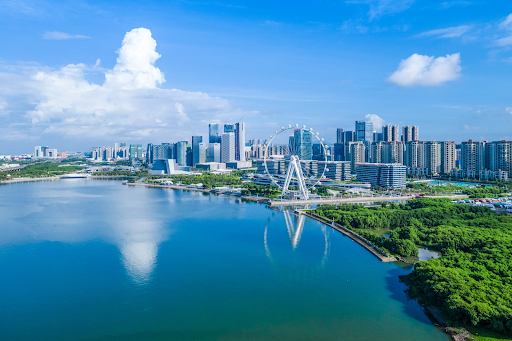
Since its origin in 1979, Shenzhen has rapidly developed economically into a megacity with a permanent population of 17.68 million, a GDP of over 3 trillion yuan, and an urbanization rate of 100% in 2021. Shenzhen is both a mountainous and coastal city with diverse ecosystems and rich biological resources. In 2018, Shenzhen was approved to become an innovation demonstration zone for sustainable development, and in 2020, it was named the “National Model City for Ecological Progress”.
Case study:Public participation in the management of nature reserves: A case study of Futian Mangrove Ecological Park
The Shenzhen Futian Mangrove Ecological Park forms part of the coastal wetland ecosystem of Shenzhen Bay, creating a buffer zone between nature and the city for urban biodiversity protection. To protect natural ecosystems in the park, the city’s approach included mobilizing and educating the public, as well as improving public services. Ultimately, the Shenzhen Municipal Government is working towards a model characterized by government leadership and public participation in nature reserve management, with guidance from experts.
As a result of this approach, biodiversity in the park has increased – in particular, the 22 species of mangrove plants and species recorded on the IUCN Red List of Threatened Species. Moreover, the ecological park creates opportunities for local and global exchanges and promotional activities to create awareness of the importance of the park. The marine forest restoration project of the ecological park was included among “Top 10 Typical Cases of “Nature-Based Solutions in China” by the Ministry of Natural Resources and IUCN.
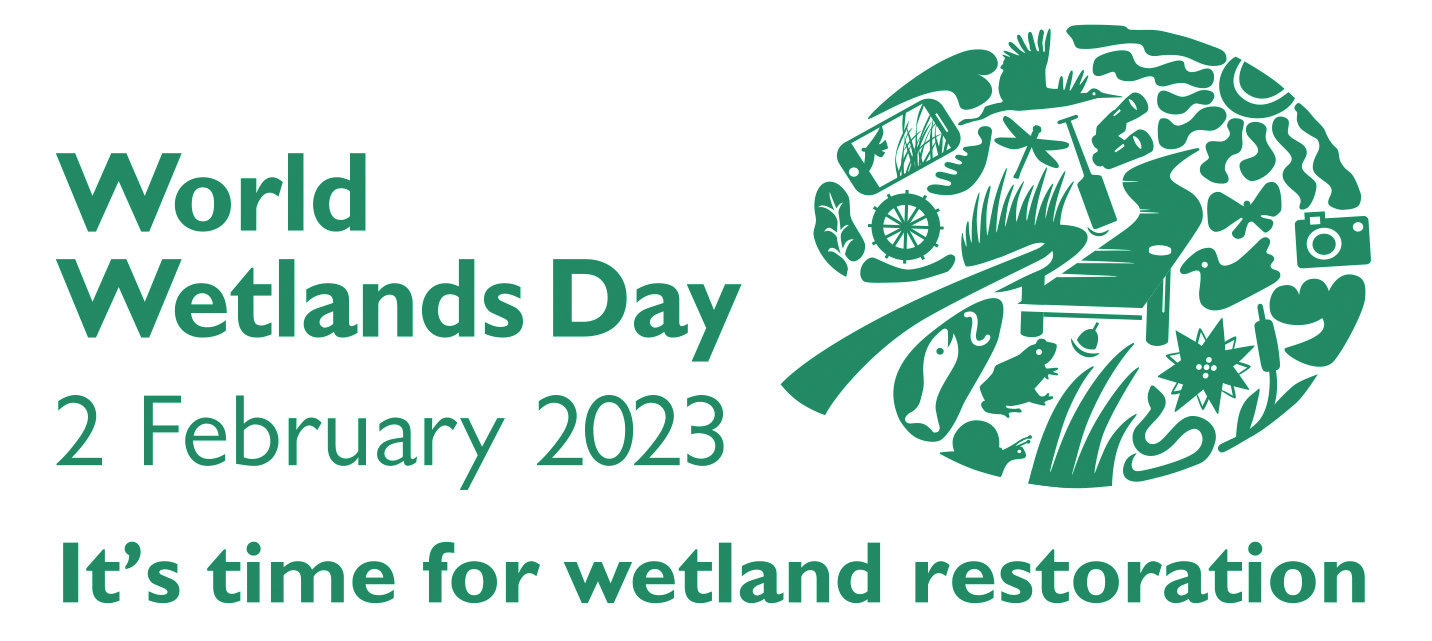
Despite being the world’s most productive ecosystems and crucial to human well-being, wetlands continue to experience extremely high rates of decline and degradation: an estimated 35% of wetlands have been lost since the 1970s. To prevent further losses and secure the necessary ecosystem services that wetlands provide – such as water purification, climate change mitigation, food and building materials, and flood control – the restoration of these important inland water and coastal systems are urgently required.
Ecosystem restoration has increasingly become a priority for scientists, politicians, officials and environmental activists in recent years as a critical approach to curb biodiversity loss and promote resilience to climate change. As such, the UN Decade on Ecosystem Restoration, a 10-year push to halt and reverse the decline of the natural world, was launched in 2020. Through this year’s Wetlands Day theme, the UN Convention on Wetlands is calling for global restoration efforts to include the rehabilitation of wetlands.
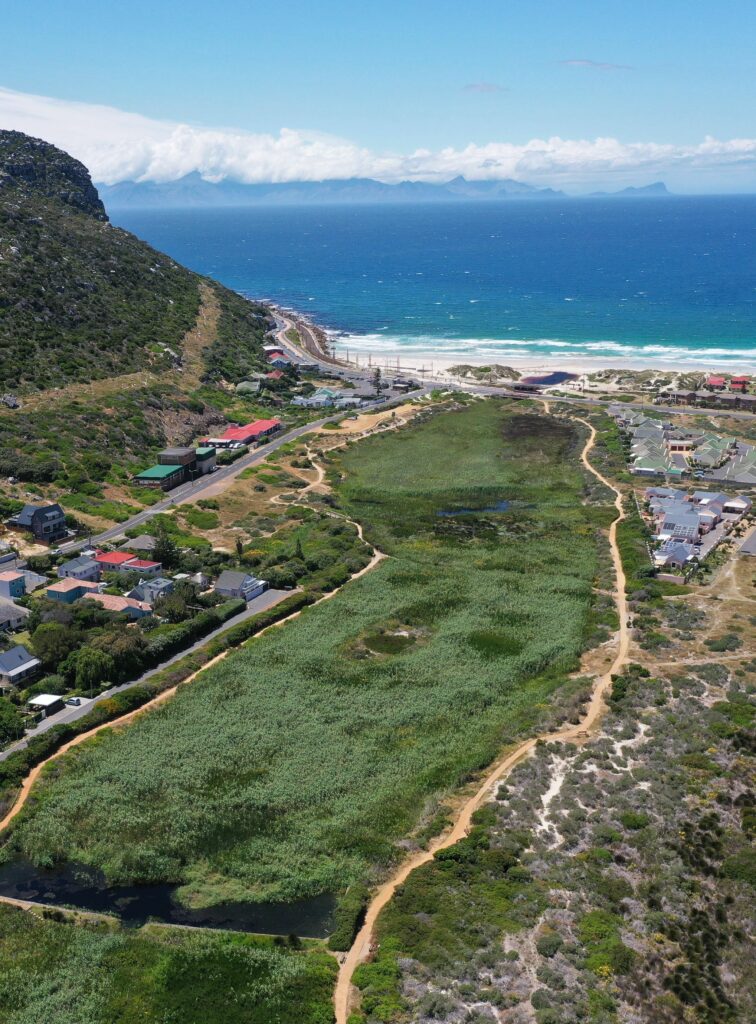
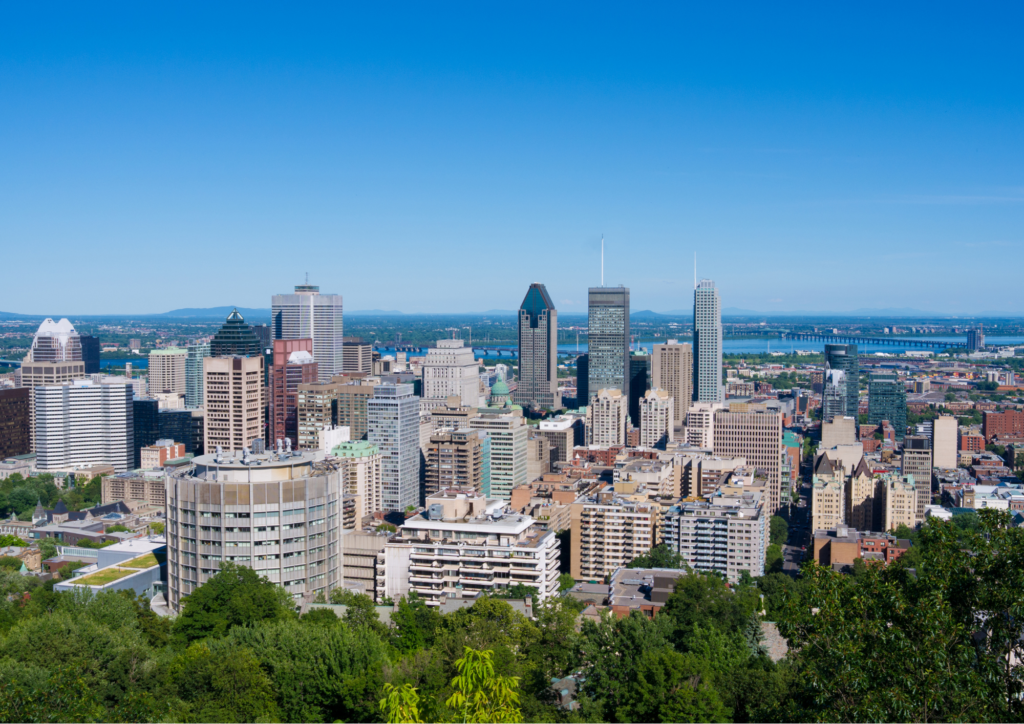
In 2022, urban wetlands were recognized as critical to human well-being at the UN Convention on Wetlands’ 14th Conference of Parties. During Ramsar COP14 in Geneva and Wuhan, Parties were called upon to take appropriate and urgent measures to achieve the goal of halting and reversing the loss of wetlands globally.
Also in 2022, the UN Convention on Biological Diversity’s 15th Conference of Parties in Montreal and Kunming witnessed the adoption of the Kunming-Montreal Global Biodiversity Framework, which includes under its Target 2 an aim that, by 2030, at least 30% of areas of degraded terrestrial, inland water, and coastal and marine ecosystems are under effective restoration.
The loss of wetlands noted above is particularly prevalent in cities. Urban wetlands are vulnerable to the adverse impacts of urbanization as they tend to be undervalued and therefore often converted or used as dumping grounds. However, while the challenges of urbanization to wetland health are profound, so too are the opportunities for wetland restoration.
As part of the newly adopted Kunming-Montreal Global Biodiversity Framework mentioned above, Parties adopted the decision titled Engagement with subnational governments, cities and other local authorities to enhance implementation of the post-2020 Global biodiversity framework and its accompanying revised Plan of Action on Subnational Governments, Cities and Other Local Authorities (2022-2030), which recognizes the vital role that cities and local authorities play in the implementation of the Global Biodiversity Framework – including by restoring urban wetlands and thereby contributing to Target 2. On the CitiesWithNature Action Platform, the CBD-recognized platform for cities to use for monitoring and reporting on their actions for biodiversity, the restoration and protection of urban wetlands can be recorded by Cities under Commitment 1 titled “Protect, Connect and Restore Ecosystems” and specified under two actions: “a) Restore and/or rehabilitate terrestrial, freshwater, and coastal ecosystems” and “(b) Increase protected areas.”
Globally, cities are increasingly acknowledging the importance of protecting and restoring wetland areas. To acknowledge cities’ significant contributions to take care of valuable urban wetlands, the UN Convention on Wetlands established the Wetland City Accreditation Scheme.
The Wetland City Accreditation (WCA) scheme was launched in 2015 – during the Ramsar Convention on the Conservation of Wetlands COP12 in Uruguay – with the aim of improving local authority or authorities’ work in conservation and wise use of wetlands. The accredited Wetland Cities are intended to act as models for the study, demonstration and promotion of the Convention on Wetlands’ objectives, approaches, principles and resolutions. Cities become candidates for accreditation by applying to the official call for applications posted here.
The WCA scheme aims to encourage cities in close proximity to and dependent on wetlands, especially Wetlands of International Importance, to highlight and strengthen a positive relationship with these valuable ecosystems, for example through increased public awareness of their importance and participation in municipal planning and decision-making.
During the Ramsar COP14 in 2022, the second triennium Wetland City Accreditation Awards Ceremony took place to celebrate the accreditation of 25 new cities (listed below). These cities have joined the already existing 18 accredited Wetland cities that have since been tasked to maintain their accreditation.
To further promote the conservation and wise use of urban and peri-urban wetlands, and to share city-level experiences among city leadership, the Roundtable of Wetland City Mayors first took place in 2019, where a Wetland City Network was established to continue the work of the accreditation scheme and enable cities to achieve more and learn from other Wetland Cities. The 2nd Roundtable of Wetland City Mayors will take place in June 2023, in Amiens, France.
The 2022 accredited cities are:
Sackville (Canada)
Sackville was built on/adjacent to saltwater marshes which had been dyked and drained in the 1600s to become freshwater “dykelands”. Since then the Town has undertaken many projects to restore, protect and utilize them, including creating legal restrictions which are supported by laws at all levels of government. The wetlands include the internationally recognized Sackville Waterfowl Park.


Hefei (China)
Hefei has 118,200 ha of wetland area, with a wetland protection rate of 76%. The city has invested in the protection of the Chao Lake area, protecting 10 wetlands covering a total of 100 square kilometers. This has significantly contributed to aquatic ecosystems, water security and quality, and wildlife habitat – up to 562 wetland plant species and 303 bird species. The City’s strategies include nine wetland education centers, wetland protection volunteers and science popularization to enhance residents’ relationship with the wetlands.
Jining (China)
Jining City is known as the “Canal Capital” for its abundant water resources, booming business activities and cultural exchanges. Jining wetlands cover an area of 158,800 ha, with the wetland protection rate reaching 77.38% as a result of the government’s commitment to wetland protection. Nansi Lake and the Grand Canal – designated as a Ramsar site in 2018 – attract millions of migratory birds every year.
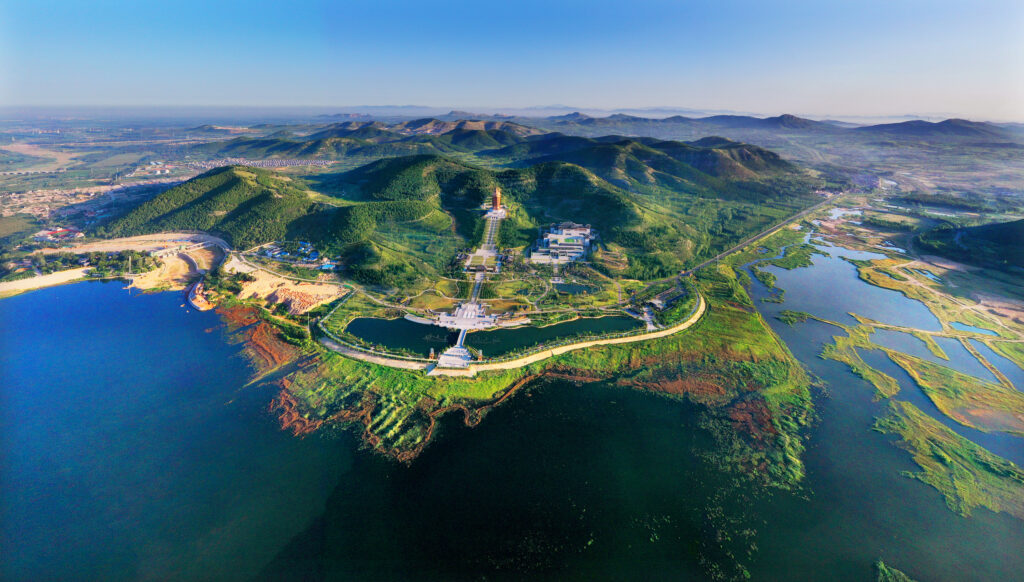

Liangping (China)
Lianping’s rivers, streams, lakes, reservoirs and small wetlands are protected by the City’s strategy of “comprehensive water management, wetlands nourishing the city”, and its adopted model of “small and micro wetlands construction with ecological conservation, pollution control, organic industry, and natural education”, to benefit the lives of communities surrounding the urban wetlands.
Nanchang (China)
Nanchang has a wetland area of 153,000 ha, which provides a major habitat for hundreds of thousands of waterfowl globally, and an important wintering place for Siberian white cranes. The City has protected 68% of its wetlands and restored more than 8,000 ha, enhancing the ecological functions of wetlands, the urban living environment, and the socio-economic development of the city.


Panjin (China)
Panjin’s wetland covers 249,600 ha, accounting for 60.8% of the whole area. Its wetland protection rate is 54.6%, with 124,000 ha of wetlands restored since 2018 – benefiting the value of rice, river crab, tourism and other wetland industries. Panjin’s coastal wetlands are home to 477 species of wild animals – including 78 species of national key protected wild animals – and a stopover or destination for millions of migratory birds, including the Saunder’s Gull, Red-crowned Crane and Western Pacific Spotted Seal.
Wuhan (China)
In Wuhan the Yangtze River (the third largest river in the world) meets its largest tributary, the Han River. Endowed with 165 lakes and 166 rivers, Wuhan has abundant wetland resources and a wetland rate of 18.9%. Ecological restoration is secured through legislative protection, ecological compensation, conversion of fish ponds to wetlands, restoration of degraded wetlands, and public participation.
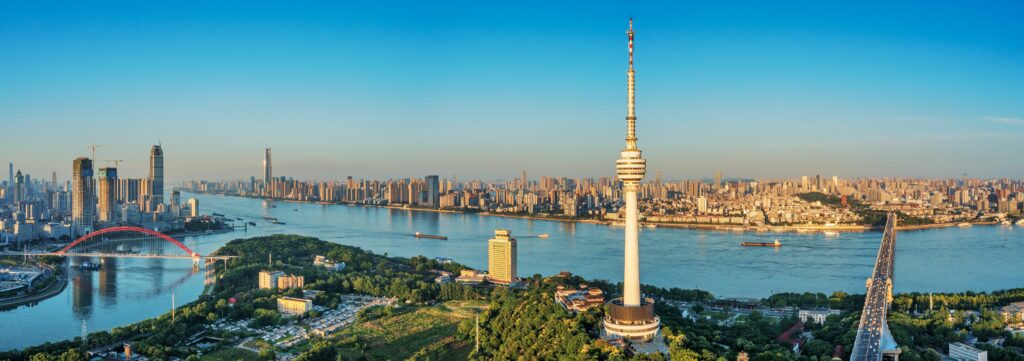
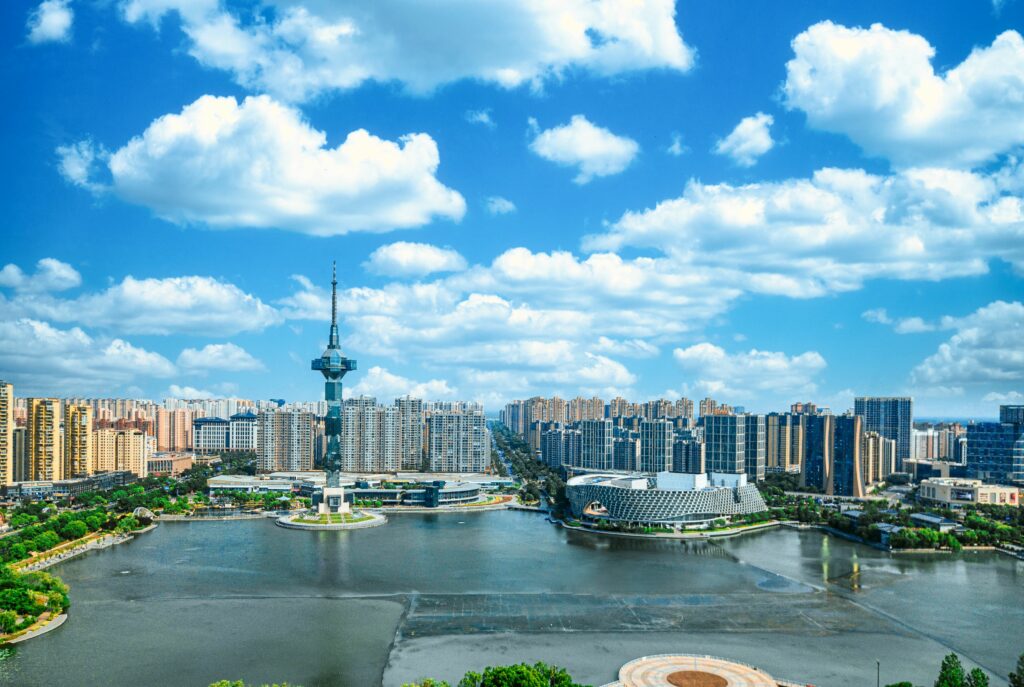
Yangcheng (China)
Yancheng has two Wetlands of International Importance and one coastal wetland World Natural Heritage Site. By 2021, the protection rate of natural wetlands in the city has reached 62%, and the “Yancheng Yellow Sea Wetland ecological restoration case” is renowned for its global nature protection in densely populated and economically developed areas.
Belval-en-Argonne (France)
The Belval-en-Argonne municipality joined forces with several nature protection associations (e.g. Birdlife France), to purchase the ponds of Belval-en-Argonne, which were designated a Regional Nature Reserve in July 2012. Major restoration work on the dykes and sluices has been carried out to better manage the water levels, and a large inventory of ponds and amphibians to create awareness of the site’s biodiversity has been created.
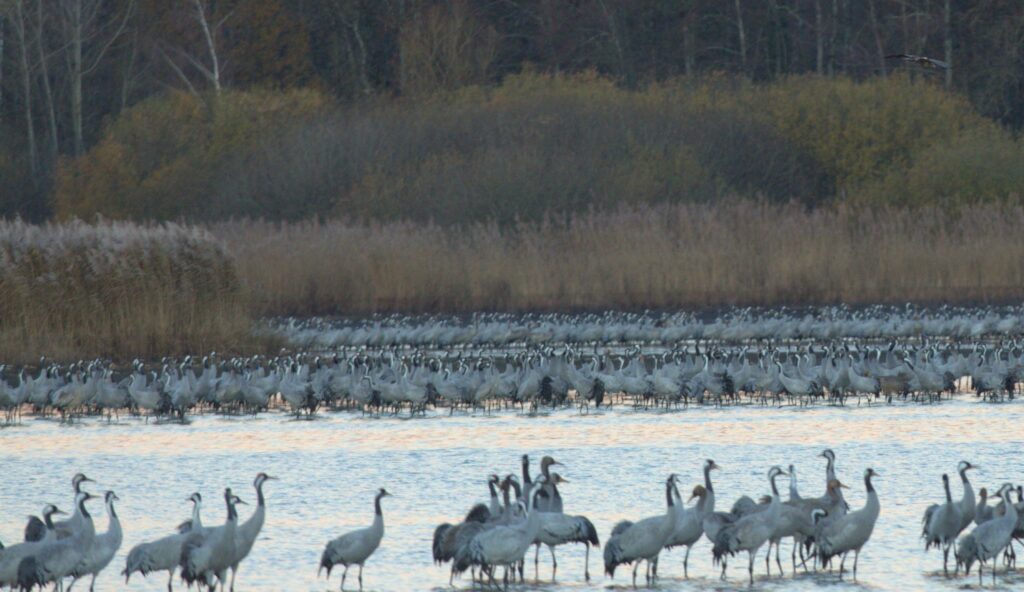
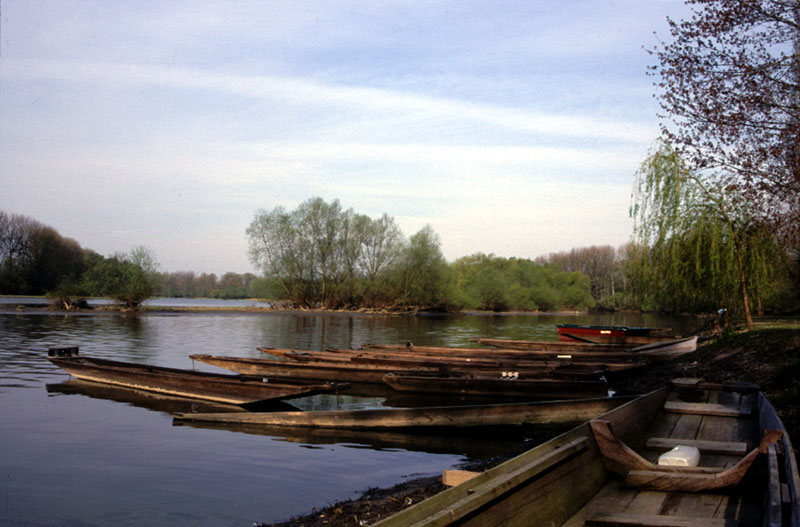
Seltz (France)
Seltz is a European town in the northern Bas-Rhin Department, with a population of 3,400 and home to the Seltz nature reserve: the Sauer Delta. This 486 ha site is remarkable for its botanical richness (including willow beds, mudflats and reedbeds), hydrology and landscapes, as well as ornithology.
Surabaya (Indonesia)
As a result of Surabaya City’s low elevation, many estuarine mangrove and wetland ecosystems have formed, amounting to 1.722,68 km2 of wetland ecosystem (76.51% of the total area 2.251,62 km2). These wetlands are important for bird species, particularly migratory seabirds and shorebirds in the East Asia-Australia Fly Away. Urban planning initiatives, in cooperation with community associations, are addressing challenges such as river and coastal pollution, seasonal water scarcity and urban flooding.
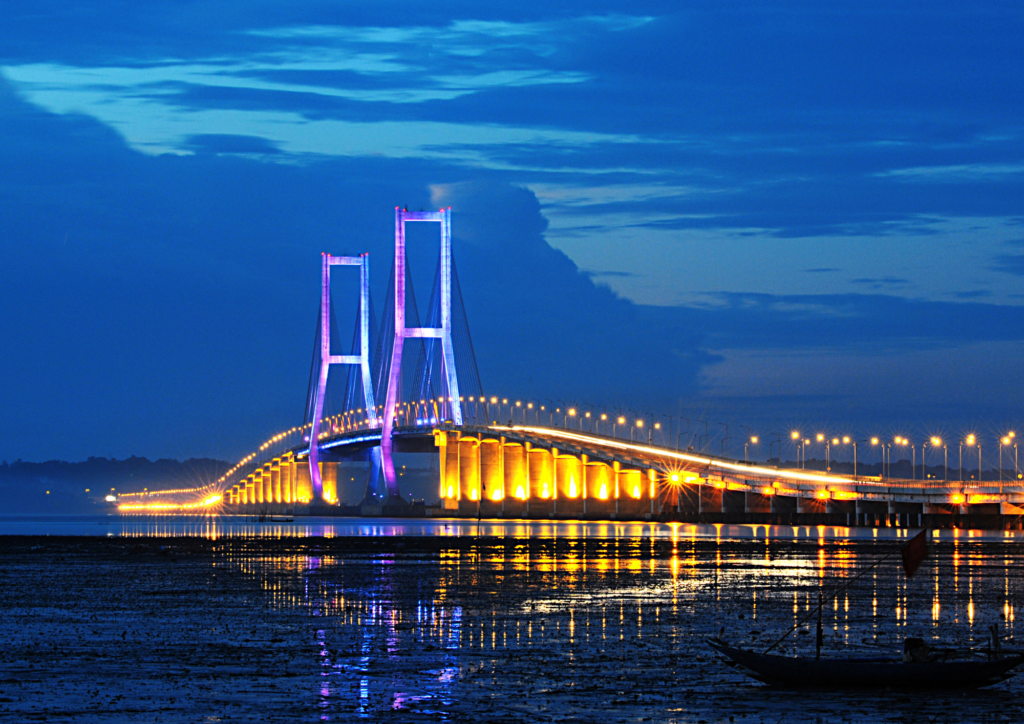
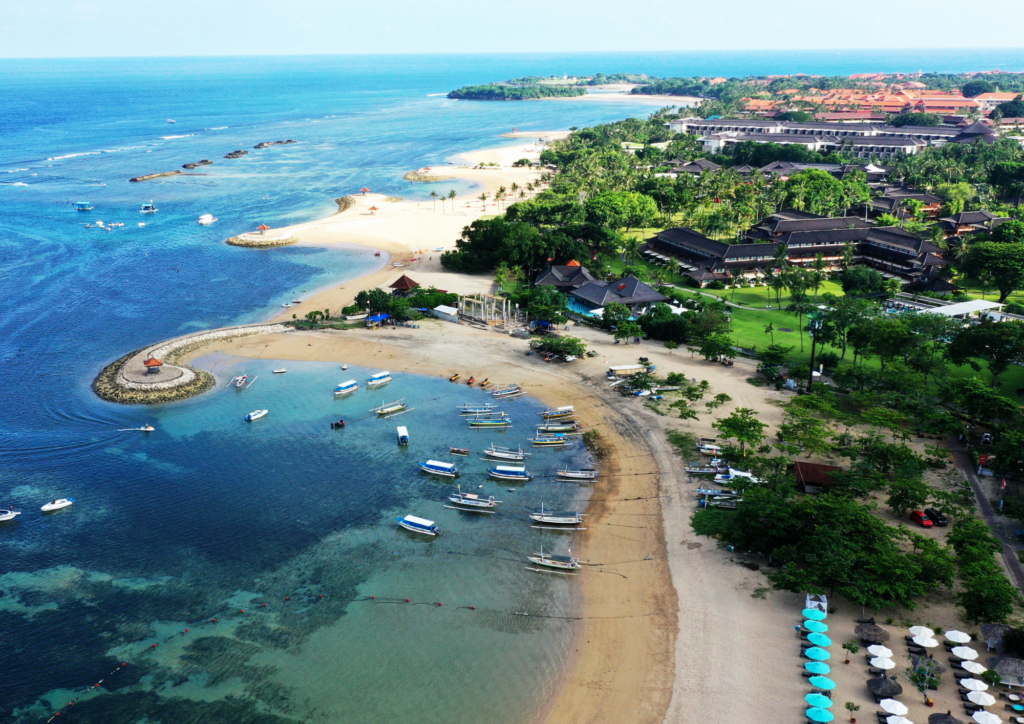
Tanjung Jabung Timur (Indonesia)
Tanjung Jabung is located on the east coast, with its west coast stretching across 12 km of the Sungai Berbak river mouth, and 15 km south of Tanjung Jabung. The city’s mangrove forest fringe ranges from 200-500 m wide and consists mainly of Avicennia marina and Rhizophora species with about 10 species of large waterbirds, including milky storks.
Bandar Khamir (Islamic Republic of Iran)
With the longest wetland coastline in Iran, Bandar Khamir has started a widespread popular movement – comprising events, festivals, educational workshops and numerous learning centers – in recent years for the wise use of the wetland. As a result of increased awareness and education of the value of the wetland and its ecosystem services, the participation and involvement of different groups to protect the wetland has increased.
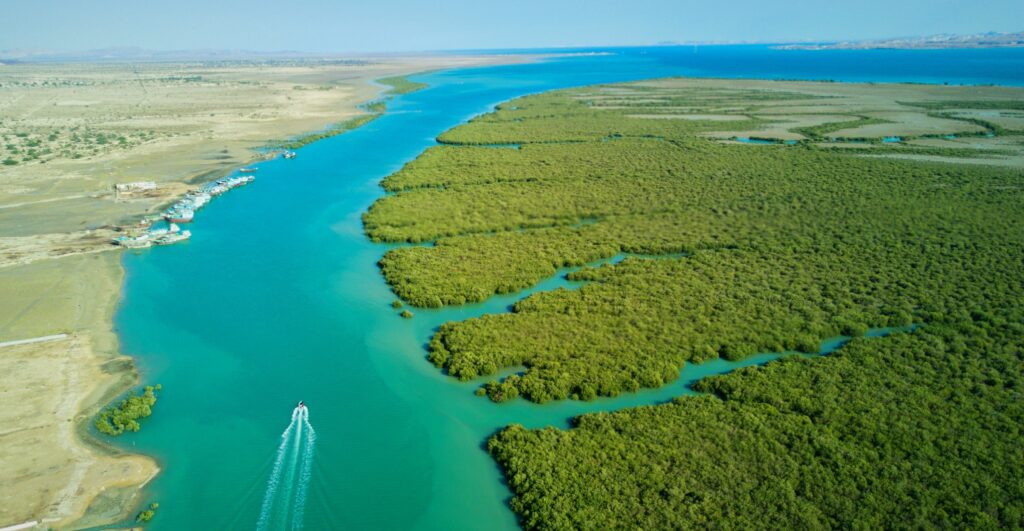
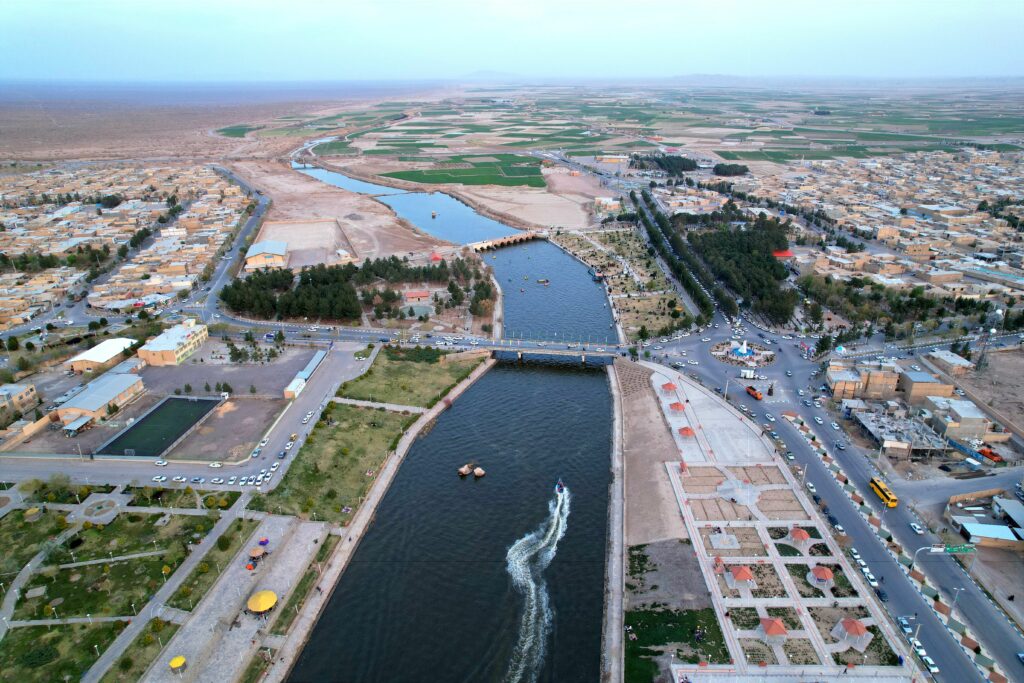
Varzaneh (Islamic Republic of Iran)
Varzaneh city is located 20 km from Gavkhouni International Wetland which is supplied by the ZayandehRud river that passes through the city. Because of the hot climate of the city, the river and wetlands have benefited residents’ livelihoods, including agriculture, animal husbandry and ecotourism.
Al-Chibayish (Iraq)
Many projects implemented in Al-Chibayish city have contributed to the revival and sustainability of its wetlands. These wetlands support infrastructure and basic services for the local population and economy, in addition to its unique scenery and ecotourism services. The marshes also support a unique cultural heritage that is characterized by its residents and their traditional handicrafts, landscapes and biodiversity – such as buffalo and wild birds.


Izumi (Japan)
Izumi City is known as the largest wintering site of cranes in Japan, where more than 10,000 hooded and 2,000-3,000 white-naped cranes migrate every winter. The wintering habitat comprises mainly rice paddies which have been protected by Japanese policies against development. One of the city’s pillars of city planning includes “A city where human happiness and environmental conservation go together”.
Niigata (Japan)
Niigata recognizes the multifaceted benefits of wetlands near the city and involves their citizens in protection activities – particularly for fisheries – such as including school children for environmental education. The Niigata community has a relationship with the waterfowl, such as swans, that roost in the wetlands at night and feed in the rice paddies of the city area during the day.

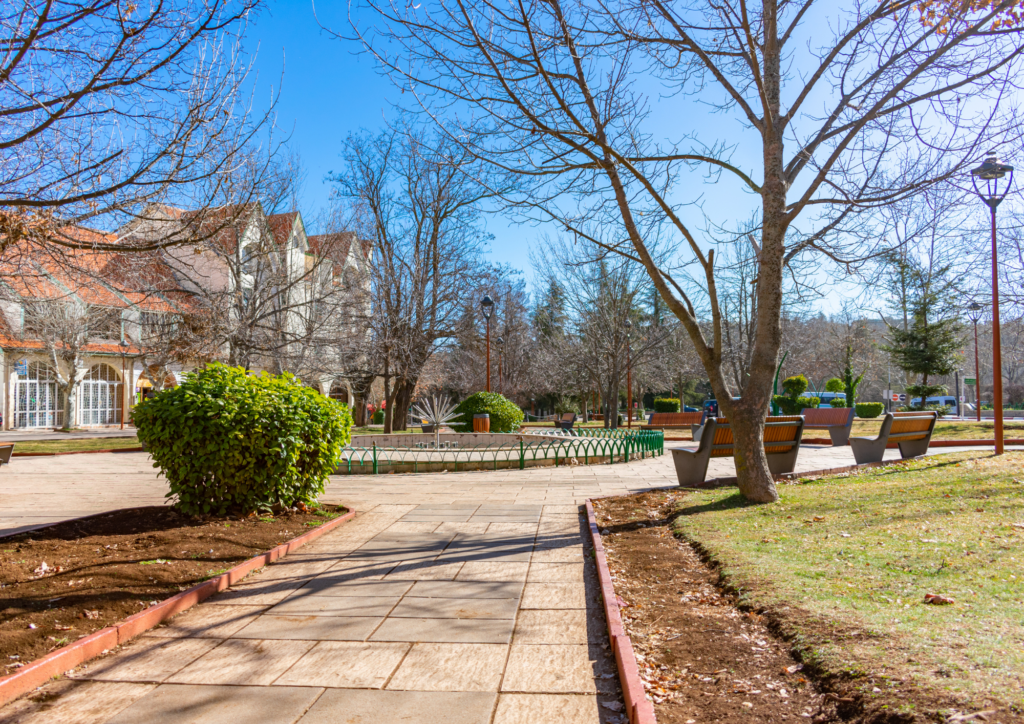
Ifrane (Morocco)
Ifrane is located in the heart of the Atlas Cedar Biosphere Reserve, and considered to be the “ecological capital” of the Kingdom of Morocco. The City is working to conserve its urban wetland ecosystems – Lake Zerrouka, the Aïn Vittel springs and Oued Tizguite – through many national regulatory measures and instruments for the protection of wetlands. With its partners, Ifrane Province is a pioneer in the restoration of wetlands by piloting the “Lake Dayet Aoua restoration project”.
Gochang (Republic of Korea)
There are two Ramsar wetlands in Gochang, both protected under the National Wetlands Protection Act. Gochang has restored the paddy fields since 2017, and restored the brackish water zone between 2016 to 2020. The area is surrounded by ecotourism activities, such as the open market, and educational programs that are creating awareness among the communities of the importance of restoring wetlands.
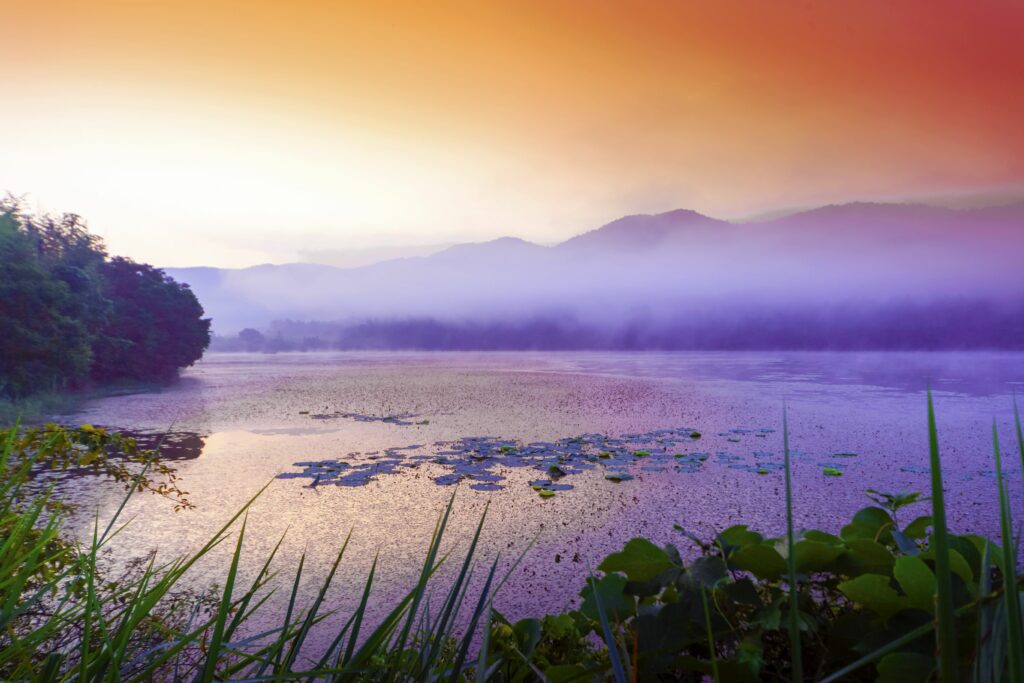
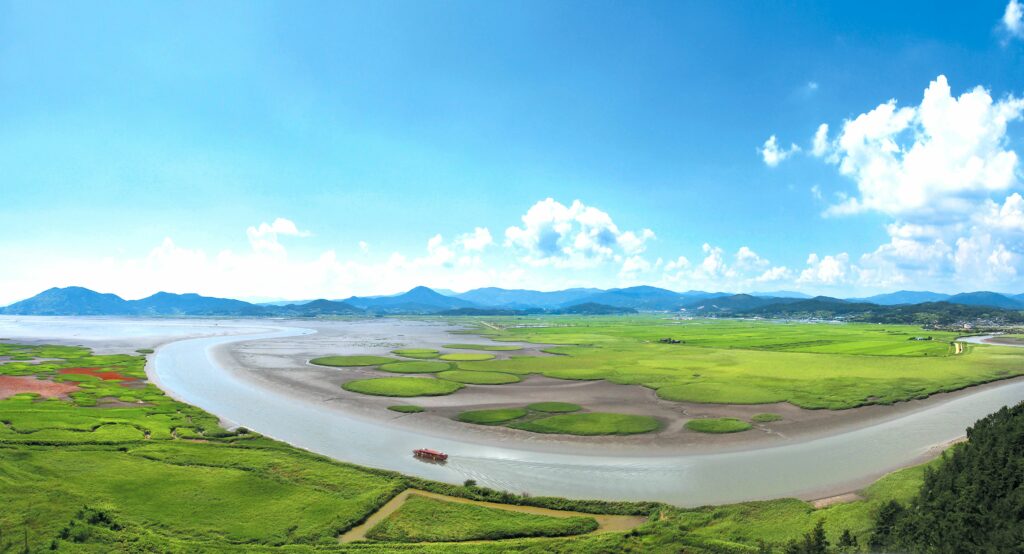
Seocheon (Republic of Korea)
The Seocheon Getbol wetland reserve – a UNESCO World Natural Heritage Site – is a designated migratory route for migratory birds between East Asia and Oceania, and home to 19 endemic species and three endangered invertebrates, supporting 100 species of waterfowl. The Seocheon County Ordinance operates the Wetlands Protection Committee, a public-private joint organization, to systematically preserve and manage wetlands through monitoring, restoration and waste collection.
Seogwipo (Republic of Korea)
The Mulyeongari Oreum Wetland in Seogwipo City is home to 15 endangered species of living organisms. Ecological specialists and local residents in Seogwipo City perform extensive ecological monitoring on a regular basis to protect the Mulyeongari Oreum Wetland.
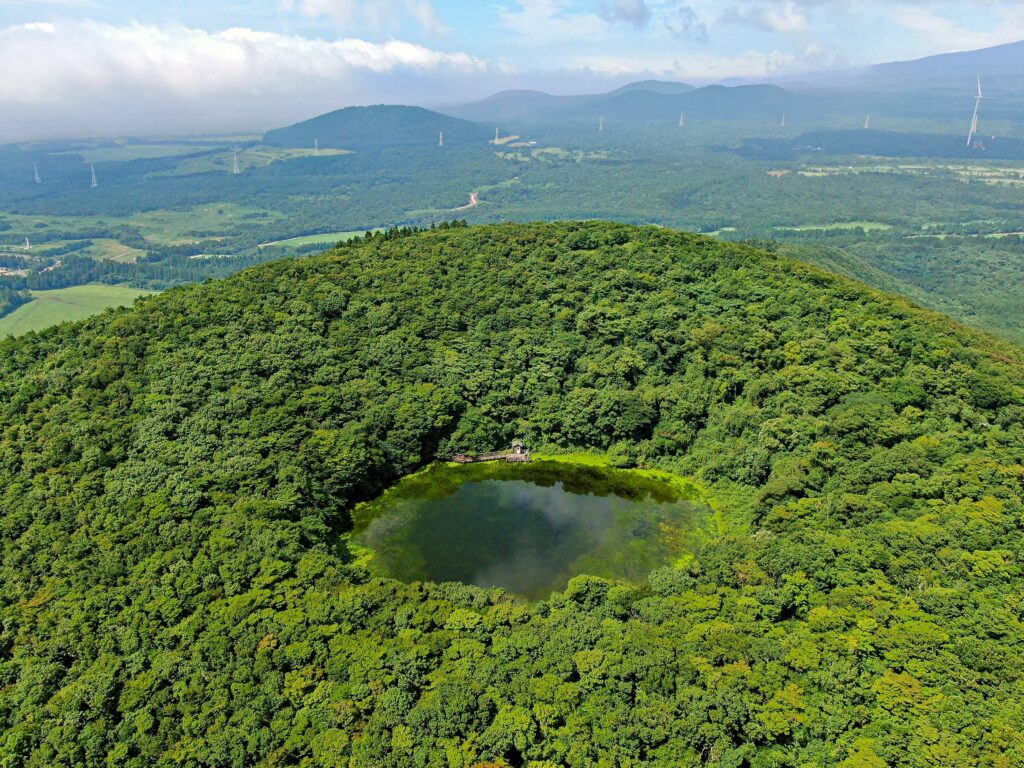
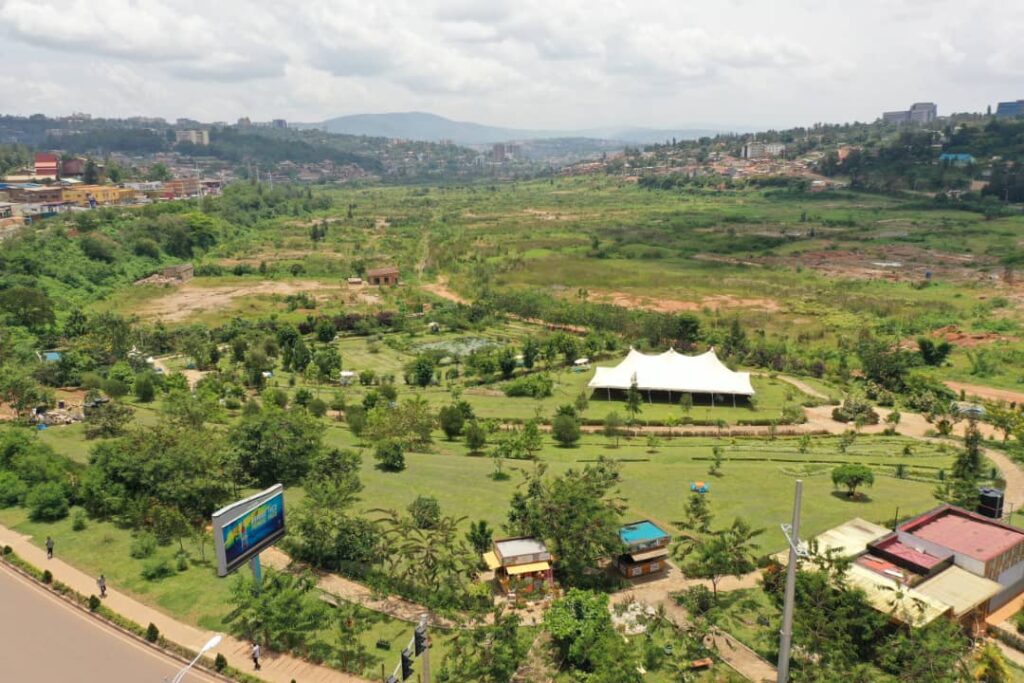
Kigali (Rwanda)
The Kigali Wetlands have been threatened by human activities such as agriculture, human settlements, commercial and industrial activities – decreasing their capacity for flood and pollution abatement. In response, the City is implementing strategic ecological rehabilitation solutions such as the Kigali wetland masterplan, which supports the efficient and sustainable management and use of wetlands. As a result, all business activities inside wetlands were evacuated; Nyandungu wetland (121.7ha) was transformed into a recreational eco-park; and a study to rehabilitate five wetlands that cover 480 ha has been conducted to contribute to its Vision 2050 of developing a Green City.
Cape Town (South Africa)
Cape Town is a coastal city with numerous wetlands and is a recognized global biodiversity hotspot. The City aims to mitigate wetland damage through innovative policies and plans, wetland offset projects, best-practice wetland management and restoration, people and conservation programmes, skills development, job creation, plus the Mayor’s priority water quality programme addressing impacts to and rehabilitation of the City’s larger wetlands.
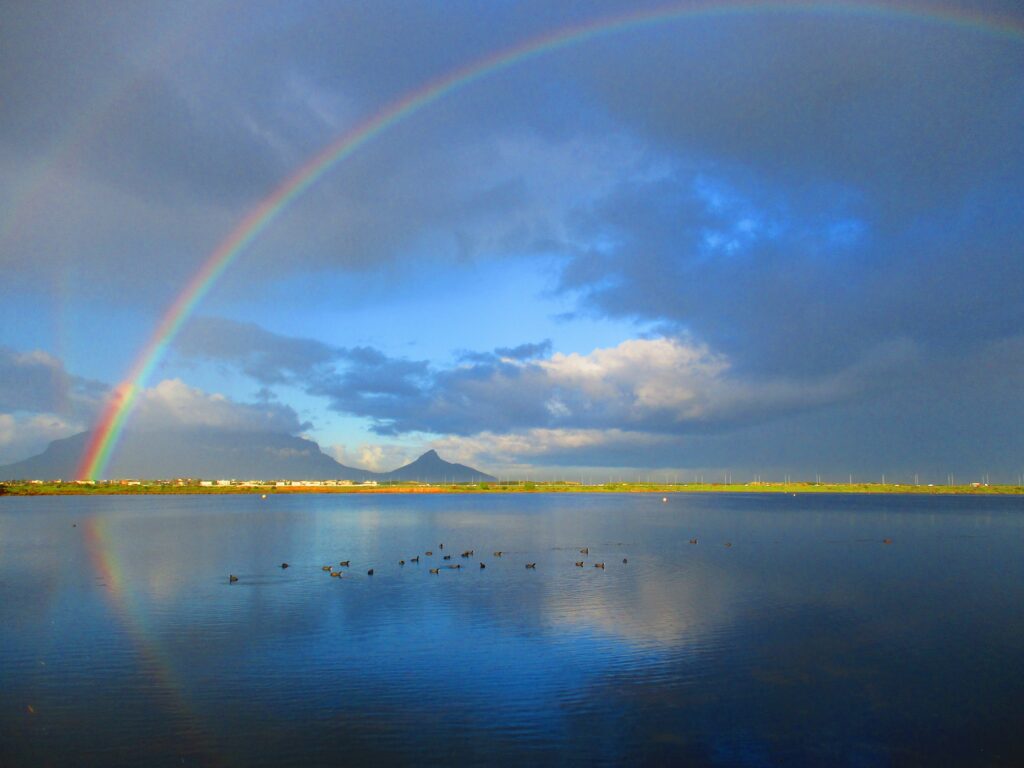
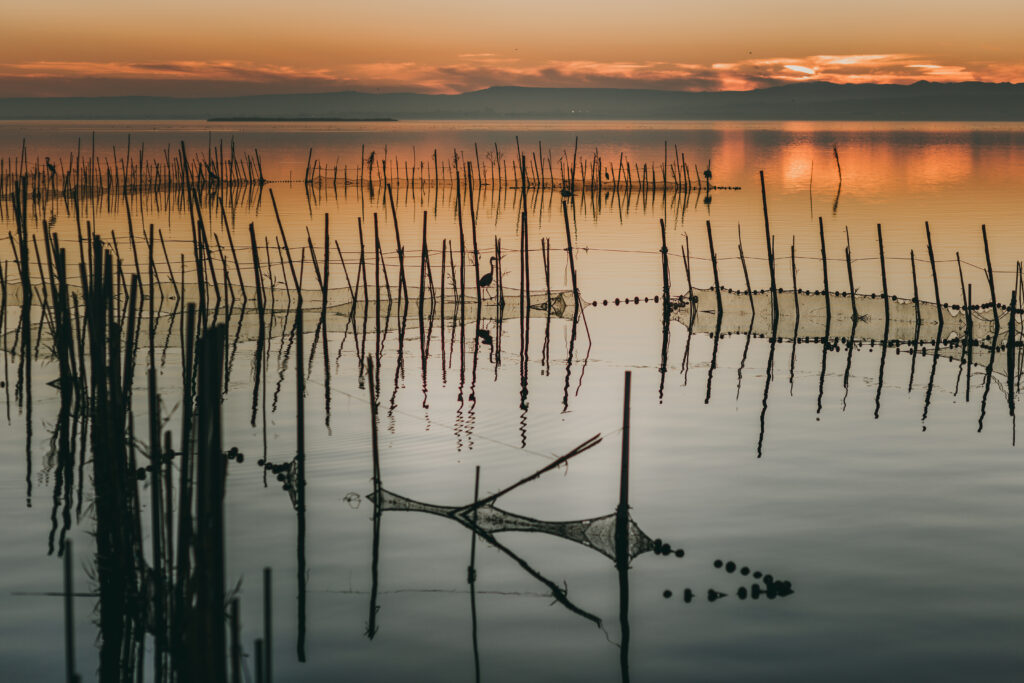
Valencia (Spain)
L’Albufera de València is a wetland culturally linked to the community’s heritage, including traditional fishing and rice cultivation. Since the 1970s, Valencia’s City Council has played a fundamental role in the site protection and planning, which has resulted in the lagoon and coastal forest being declared a Natural Park in 1986. In 1982, the Devesa-Albufera Municipal Service was created, responsible for the development of plans and projects for the conservation and restoration of the wetland.
Sri Songkhram District (Thailand)
The Songkhram River has a basin of 6,473.27 km2 and is an important tributary of the Mekong River. About 54.2% of the overall Songkhram Basin may be classified as “wetlands”, which are significant as a capture fishery providing seasonal employment, income and food to thousands of households. Other products are also sourced from the wetlands by local residents (e.g. mushrooms, bamboo shoots, wild vegetables and reeds). The wetlands, declared as a Ramsar site, are protected as a “community forest” on both sides of the Songkhram River, set up by Thailand’s Royal Forest Department.
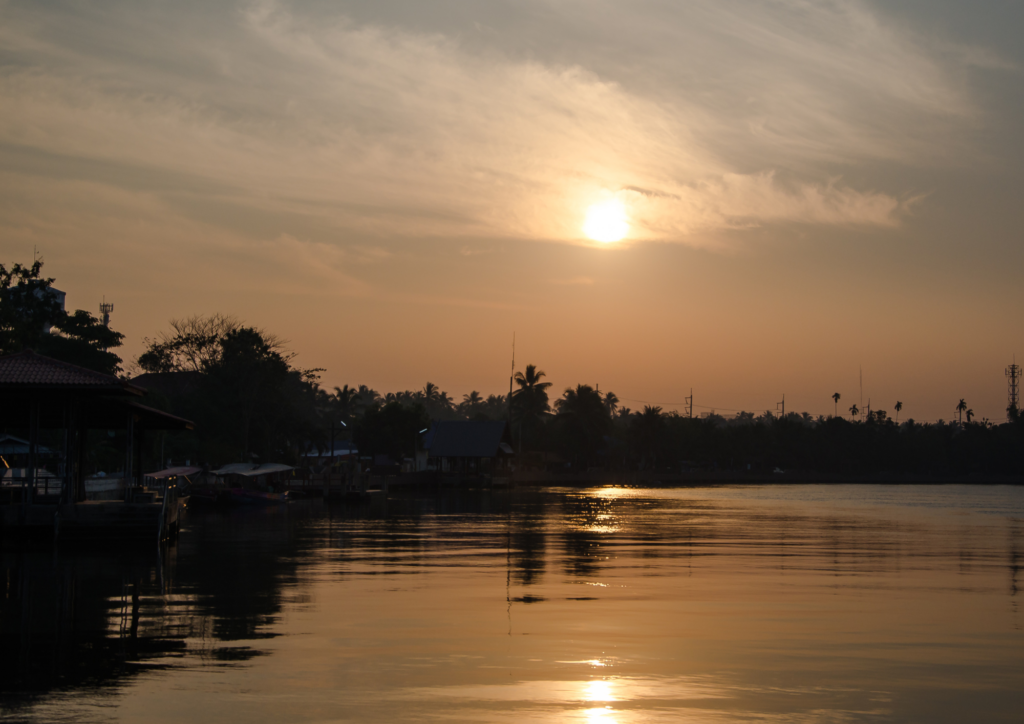
The Independent Advisory Committee (IAC) governs the Wetland City Accreditation Scheme. This committee reviews the Wetland City Accreditation applications from candidate cities and reports its decision to the Standing Committee of the Convention. ICLEI, along the Convention on Wetlands’ International Organization Partners, promotes the Wetland City Accreditation Scheme and local efforts to gain and maintain its branding. Through ICLEI’s city networks and CitiesWithNature platform, it is well positioned to promote the Wetland City Accreditation brand. During the second triennium from 2019 until 2022, ICLEI has been serving as Co-chair of the IAC, 25 more cities were accredited and they received their award during an Award Ceremony at COP14 in Geneva in 2022.

In the build-up to the Convention on Biological Diversity (CBD) COP15 – which will take place in Montreal from 7-19 December 2022 – ICLEI Cities Biodiversity Center, in collaboration with ICLEI’s regional offices, provided capacity-building webinars to demonstrate uploading actions and commitments to the CitiesWithNature Action Platform, recognized in the Plan of Action on Subnational Governments, Cities and Other Local Authorities for Biodiversity (2021-2030).
The road to COP 15 is a crucial moment for local and subnational governments to demonstrate their commitments to actions that will contribute to the successful implementation of the new global biodiversity framework (GBF) and its targets. As a result, the CitiesWithNature Action Platform webinars not only trained cities across the world on using the platform, but also explained the importance of their engagement and participation in the platform in the build-up to COP15.
The CitiesWithNature team that served as recurring speakers in all the webinars are:
Ingrid Coetzee
Director Biodiversity, Nature & Health, ICLEI Africa
Stefania Romano
Senior Professional Officer – Global CitiesWithNature and RegionsWithNature Coordinator: Recruitment and Advocacy
Willemien Calitz
Communications Officer
Jade Sullivan
Professional Officer: Biodiversity, Nature & Health
| USA RO | Speakers: Calyn Hart Program Officer, ICLEI USA |
| Southeast Asia RO | Speakers: Russel James Andrade Biodiversity Focal for ICLEI Southeast Asia; Project Assistant Victorino Aquitania Regional Director ICLEI - Local Governments for Sustainability Southeast Asia Secretariat Dr. Rajan Chedambath Director: The Kochi Municipal Corporation and the Centre for Heritage, Environment and Development Puerto Princesa City Dr. Lena Chan Senior Director of the International Biodiversity Conservation Division, National Parks Board (NParks) of Singapore |
| SAMS & MECS | SAMS (Portuguese) Speakers: Marília Israel de Azevedo Borges Biodiversity Analyst at ICLEI South America Rodrigo Corradi Deputy Executive Secretary at ICLEI South America Oliver Hillel Programme Officer at the Secretariat of the Convention on Biodiversity Bianca Cantoni Coutinho Advocacy Officer at ICLEI South America Jaime Holguin Representative of the Development Bank of Latin America (CAF) Luciano Paes Secretary of Climate of Niterói Gabriel Neves Municipal Secretary of Green, Environment and Sustainable Development Municipal Government of Campinas Leta Vieira Technical Regional Manager: Low-Carbon, Resilience, Biodiversity and Circular Development, ICLEI ICLEI SAMS (MECS) Speakers: Ivana Del Río Technical Secretariat - ICLEI Mexico Maria Mejia Lead - BiodiverCities by 2030 Initiative at Instituto de Investigación de Recursos Biológicos Óscar Figueredo Bucaramanga Metropolitan Area, Colombia Paulina Soto Director of Programmes and Projects Sergio Aranguren Biodiversity Coordinator, ICLEI Braulio Diaz Institutional Relations and Advocacy Regional Manager, ICLEI |
| Oceania RO | Speakers: Steve Gawler Regional Director ICLEI Oceania Cr Amanda Stone Councillor, Yarra City Council, Australia, ICLEI Global Executive Committee Member and ICLEI Oceania Regional Executive Committee Helaine Stanley Program Advisor CWN Academy Nadine Gaskell Biodiversity Coordinator, City of Knox |
| European RO | Speakers: Shreya Utkarsh Officer: Sustainable Resources, Climate and Resilience Gillian Dick Spatial Planning Manager – Research & Development Development Plan Group Neighbourhoods, Regeneration & Sustainability, Glasgow City Council Marta Mansanet Cánovas Policy Officer: European Committee of the Regions Holger Robrecht Deputy Regional Director of Sustainable Resources, Climate and Resilience |
| Africa RO | Speakers: Bronwen Griffiths Head: Sustainable Partnerships & Financing, Spatial Planning & Environment: Environmental Management Department, City of Cape Town Alex Kivumbi Principal Community Development Officer, Makindye Ssabagabo, Uganda |